MPG visit to Catalonia
Sunday 19 – Saturday 27 May 2019
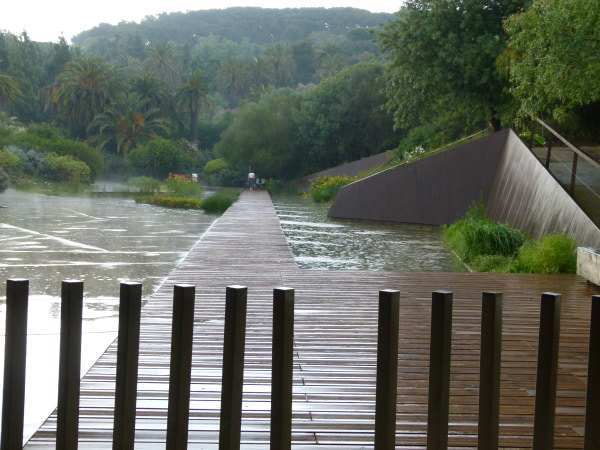
DAY 1 – Sunday 19 May
With participants flying and driving in from many different points, it was a great feat of organisation by Brian Constable that we all ended up at the Barcelona Botanical Garden to be met by our guide Laura. Unfortunately, we arrived as the heavens opened, so this first part of our visit was very wet. However, the weather improved as we walked through the garden, which is set on the southern slope of the Montjuic area of Barcelona, among the sports venues which were built for the Olympics in 1992. On a clear day, the garden has views over the city, port and Llobregat delta.
Preparations for the Barcelona International Exposition in 1929 included the development of several gardens and parks, including the Botanical Garden.
Designer Pius Font I Quer was commissioned to build a botanical garden and in 1930 he began to assemble a remarkable collection of endemic and rare plants, mainly originating from the Iberian Peninsula, the Balearic Islands and Morocco. Over the years, the planting has been developed and there are now about 1500 species grown in the garden which is laid out in eight geographical areas, reflecting the Mediterranean climate areas.
We started off by walking up through the Australian zone, stopping to look at plants including several familiar and less familiar grevilleas. By the time we reached a magnificent specimen of Xanthorroea glauca, the rain had eased and the sky was turning blue.
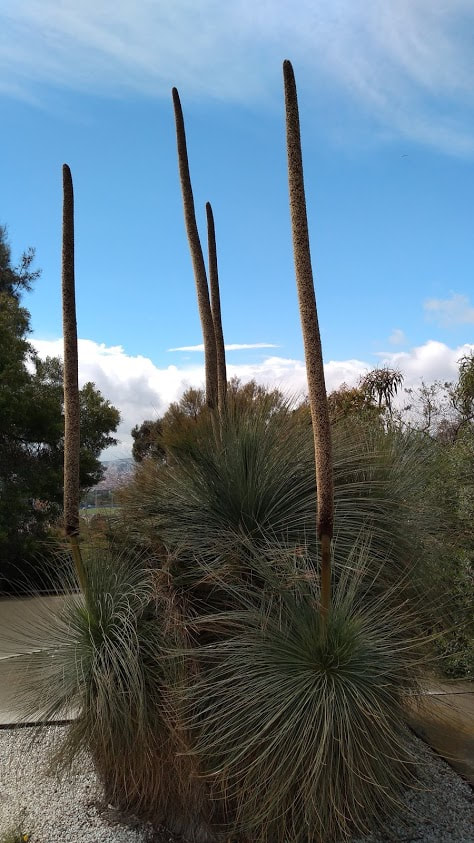
Xanthorroea glauca
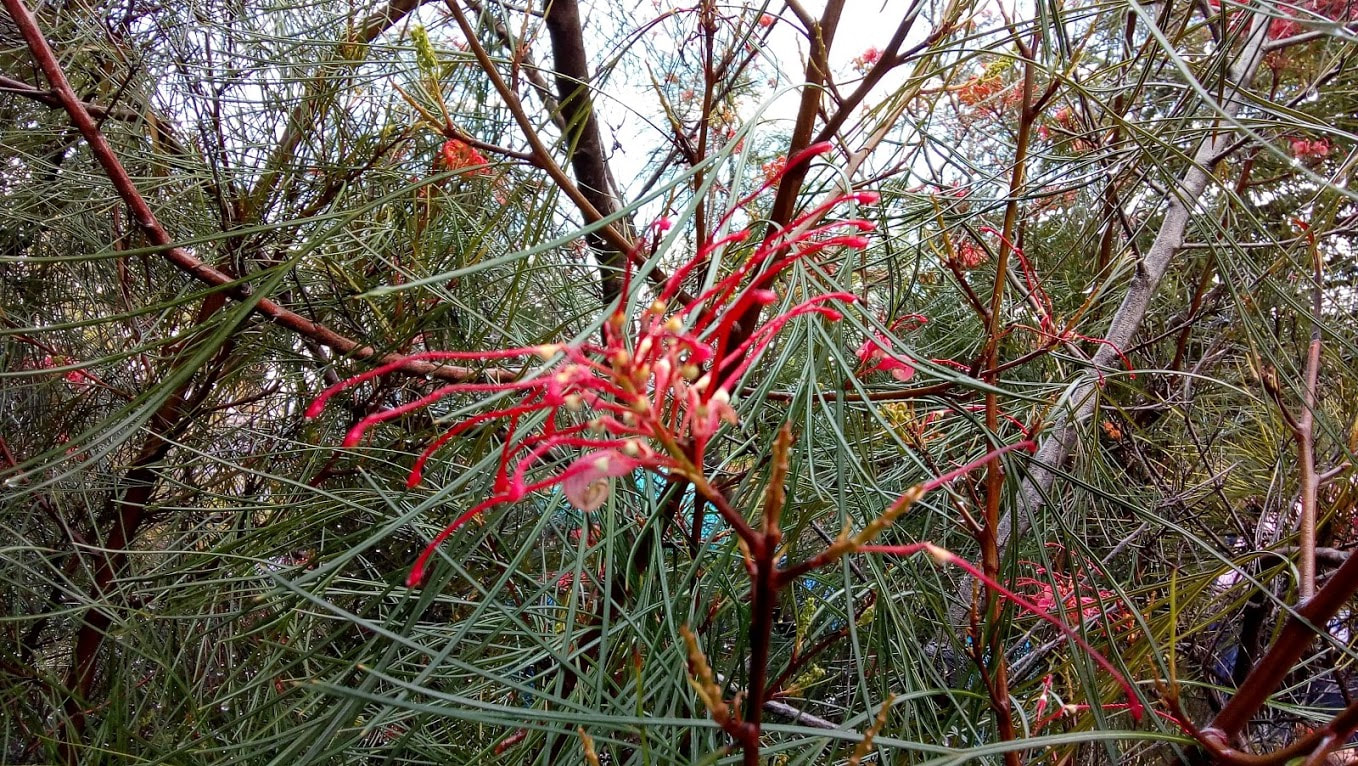
Grevillea johnsonii
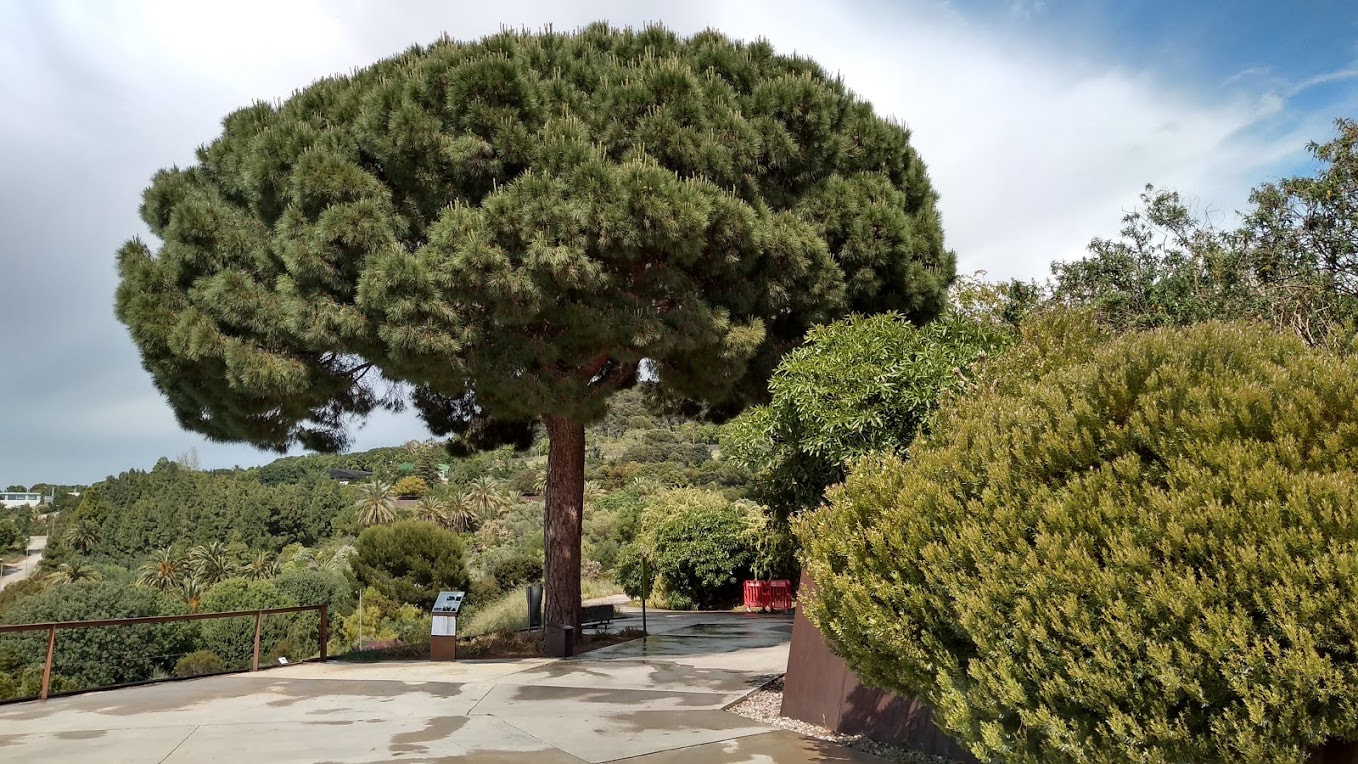
Pinus pinea – the umbrella pine
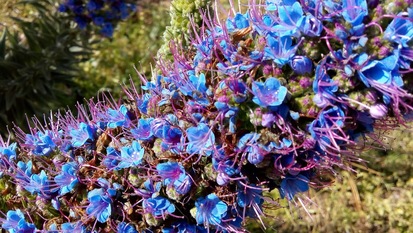
One of many echiums
We continued our tour through the different zones – South Africa, Chile, California and Western Mediterranean, Eastern Mediterranean, North Africa and the Canary Isles, with our guide pointing out particular plants of interest.
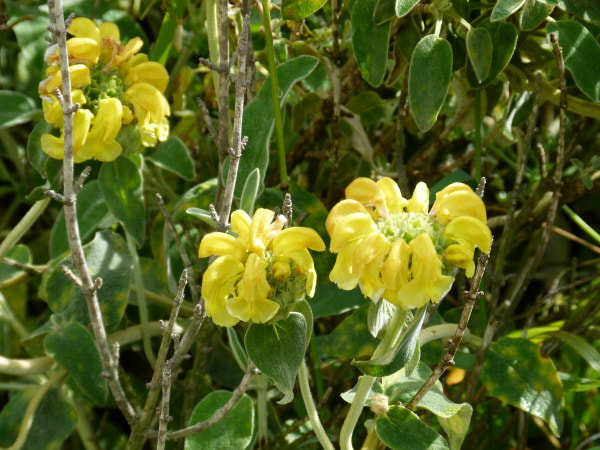
Phlomis lanata
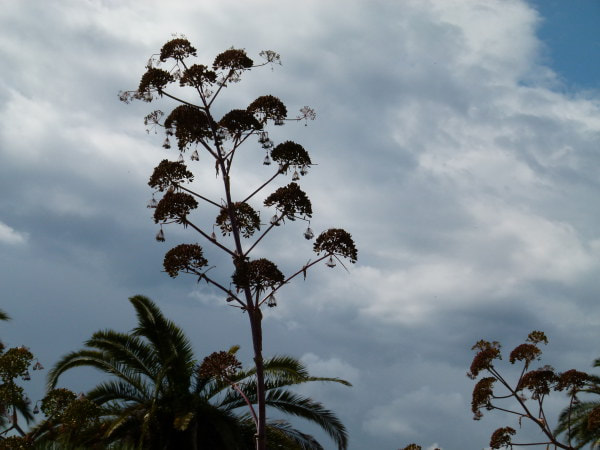
Ferula linkii
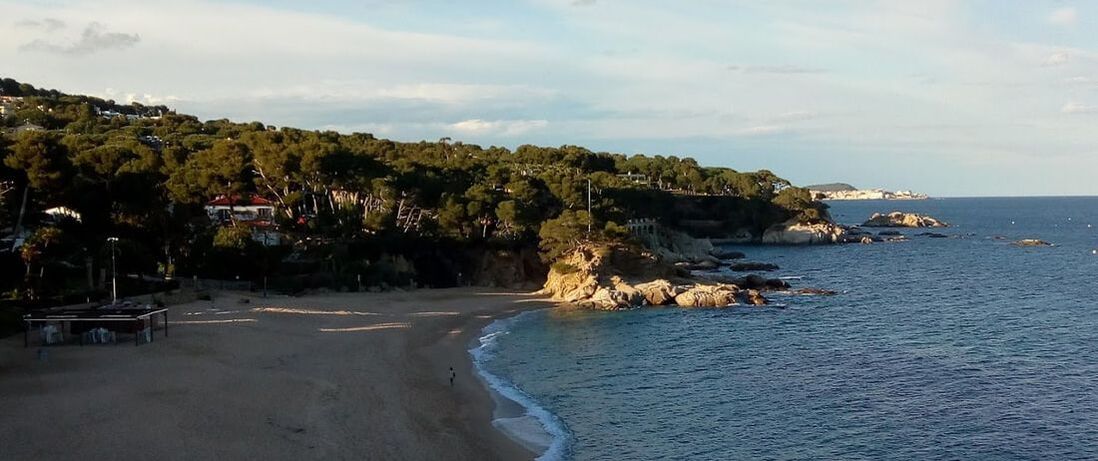
View up the coast from the Hotel Costa Brava
DAY 2 – Monday 20 May
Lunch in Spain is usually eaten quite late, so we got used to filling up at the extensive breakfast buffet in the hotel to keep us going until lunch.
We met Bartolomé, our driver for the rest of the tour, and drove for about an hour to our first stop, the Marimurtra Botanical Garden, in Blanes on the coast. We were welcomed by Josep Borrell, Director of the garden, who gave us an overview of the history and layout. He introduced us to Ana Sans, a volunteer guide who took us round the garden and we were joined later by Jordi Fabregas, the Plant Records Officer.
The garden was founded by Carl Faust, a German businessman who had set up his own hydraulic engineering business, which proved so successful that he was able to retire in 1924 when he was 50 years old. He then devoted himself to developing his botanic garden which he named Marimurtra – Sea and Myrtle – two of the features of the garden. He used his professional water engineering knowledge to collect rainwater in underground tanks with a capacity of two million litres. and pipe it around the garden. The garden now contains some 4000 different species.
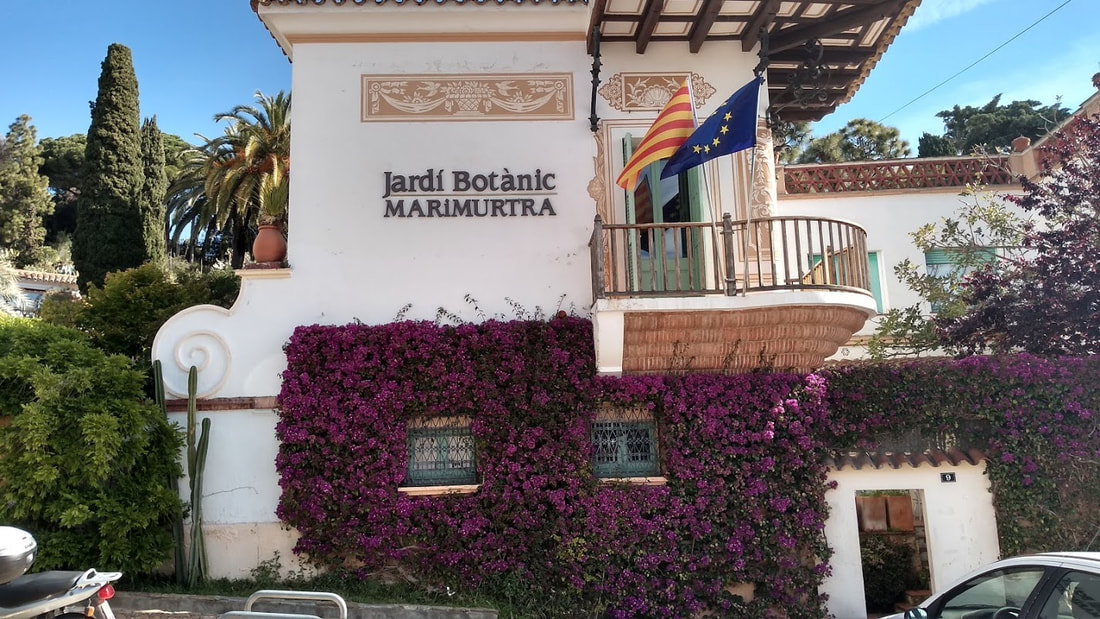
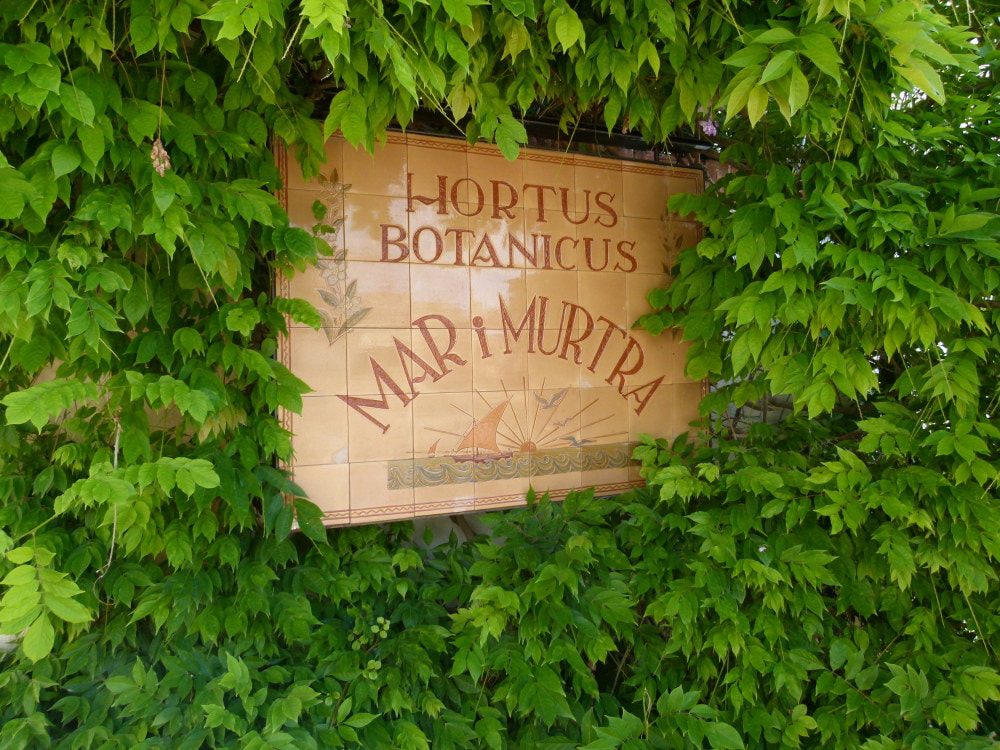
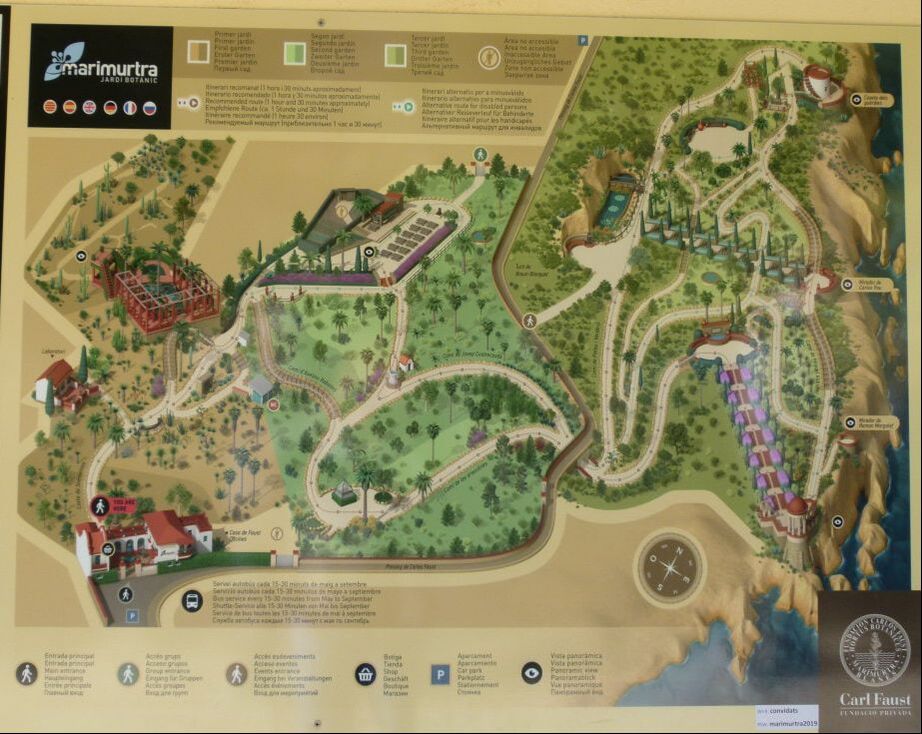
The garden was developed in three phases, with the first part, nearest the house, dedicated to cacti and other succulents. The best view of the succulent garden is from a substantial stone pergola, which is densely shaded by a large number of climbing plants. It must be a pleasantly cool place to rest on a hot day, but it was a little chilly when we were there.
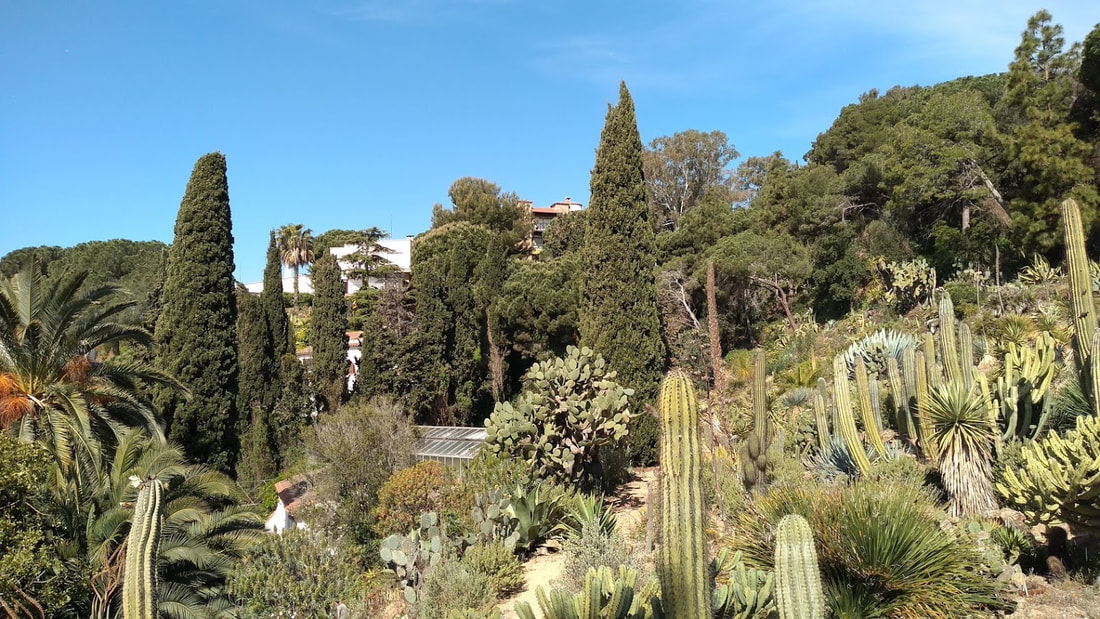
A small part of the cactus collection
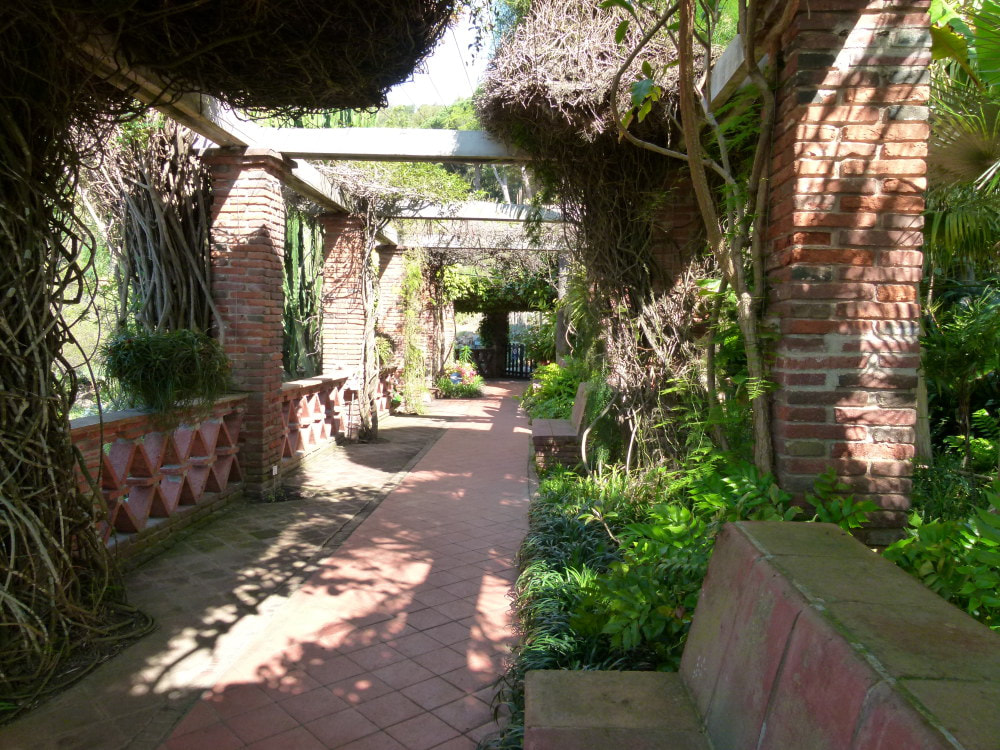
The shady pergola
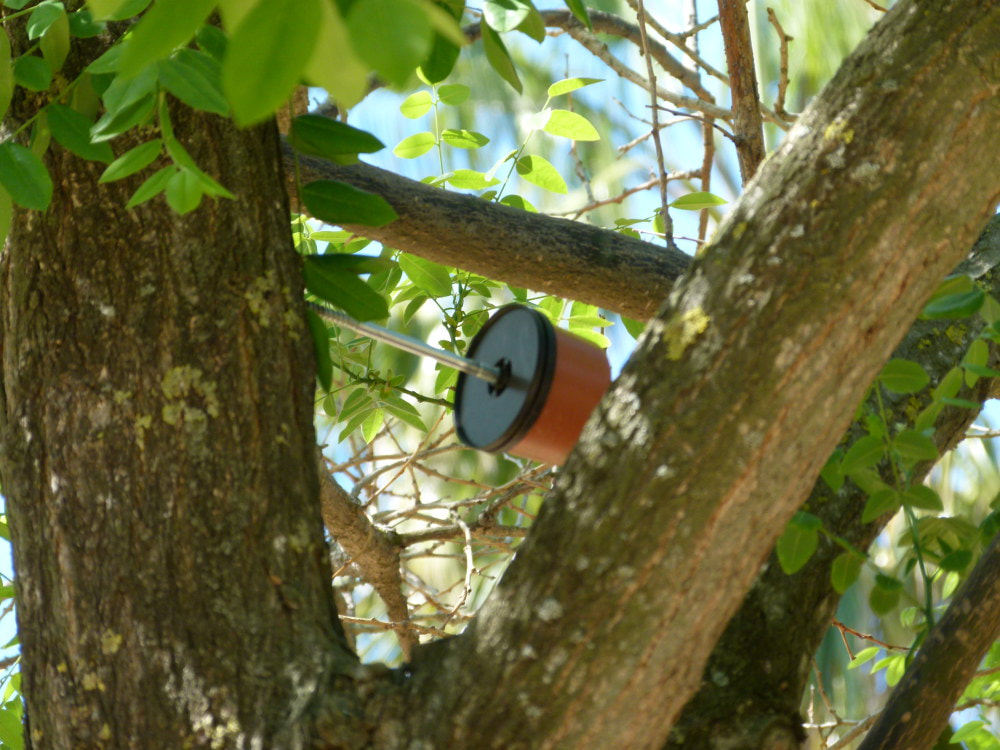
Electronic sensor to detect movement of larvae
The second garden has plants from temperate and subtropical regions. There is an extensive collection of palm trees, although a number of Phoenix canariensis have been destroyed by the red palm beetle (Rhynchophorus ferrugineus), which is ravaging many palms around the Mediterranean. A project is underway to evaluate the use of nematodes to combat the pest, while currently electronic sensors are plugged into the top of the stem. When the movement of larvae is detected, a mobile phone alarm is sent to alert staff who treat them with neem oil.
A concoction made from nettles, larkspur and equisetum, grown in the garden, has been successfully used as a plant stimulant and pesticide, and there is now a research project to understand its effectiveness.
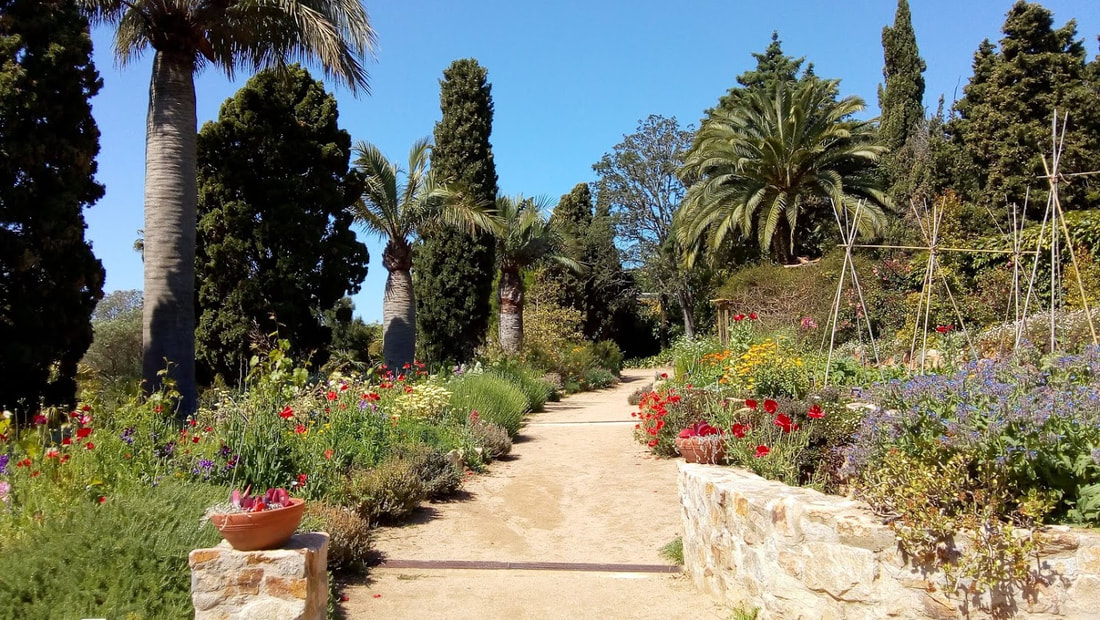
The vegetable beds are surrounded by flowers to attract pollinators
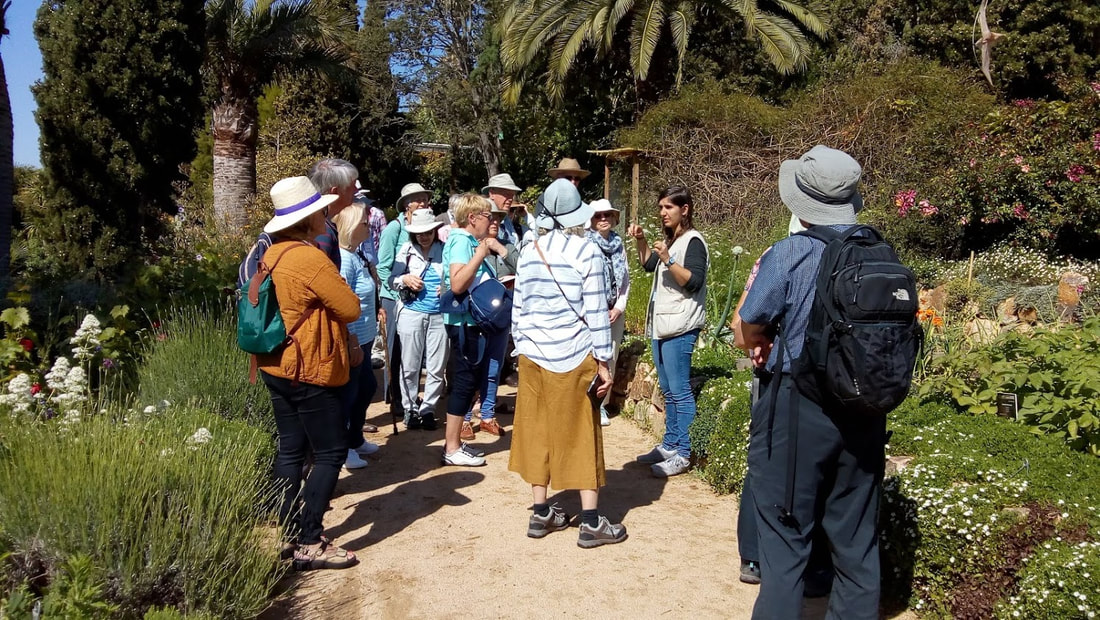
Ana explaining about the ecological principles of the garden
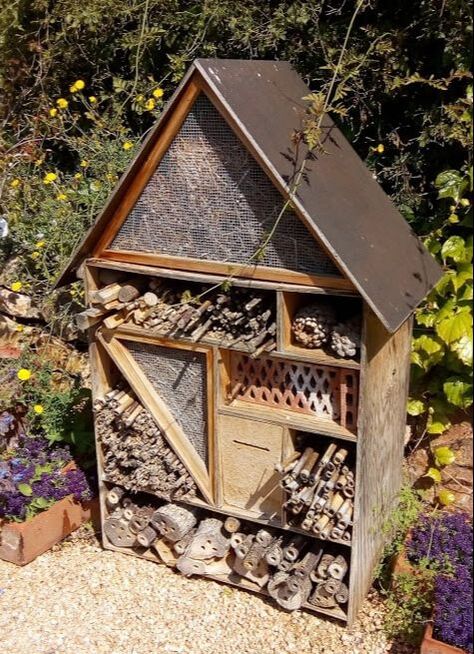
Bug hotel
The whole garden is run on ecological principles, without the use of chemicals, and the bug hotel was popular with a range of different insects.
Both here and at the Barcelona Botanic Garden, many of the palms are left untrimmed as they would be when growing in the wild: the dead fronds up the stem providing protection and also a habitat for wildlife. The palms are often interplanted with Strelitzia nicolai and S. reginae growing to impressive heights.
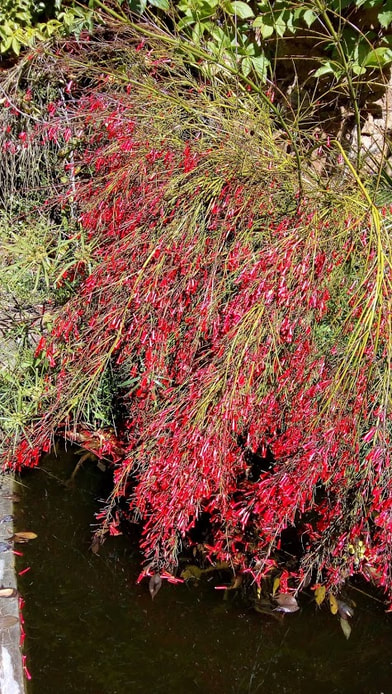
Russelia equisetiformis
An underground tunnel leads to the third garden which is dedicated to species from Mediterranean climates around the world, with a good representation of plants from the Costa Brava.
Although the floras of the different Mediterranean areas occupy separate areas, the planting is not followed strictly and throughout the garden plants are planted in conditions which suit them, leading to a harmonious feel.
An open space called the Goethe Garden is surrounded by palms, oleanders and trees from many Mediterranean areas around the world. A semi-circular pool on one side is backed by a wall tiled with a verse from Goethe’s Mignon and framed with Russelia equisetiformis. On the other side a straight stairway descends to a circular, domed building, known as the Temple of Linnaeus from where there are spectacular views over the Costa Brava.
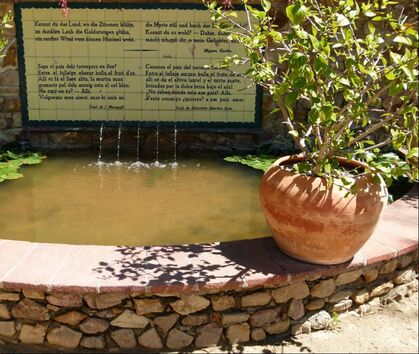
A verse from Goethe’s ‘Mignon‘
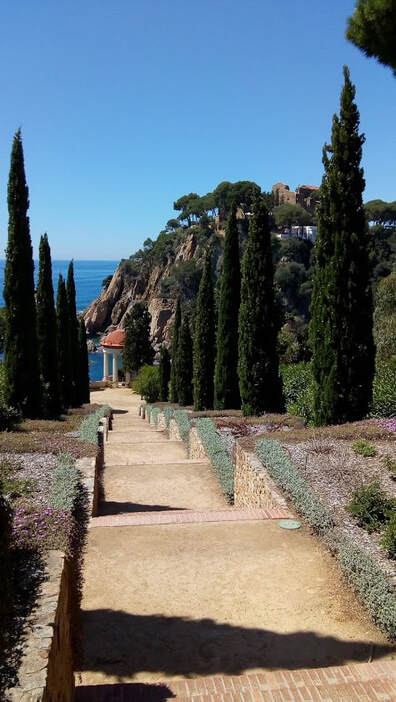
View down the steps to the Temple of Linnaeus
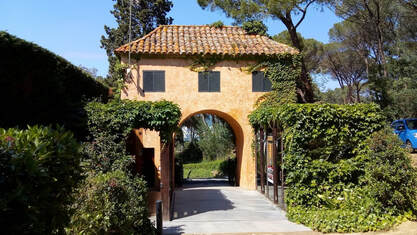
Entrance to La Clotilde
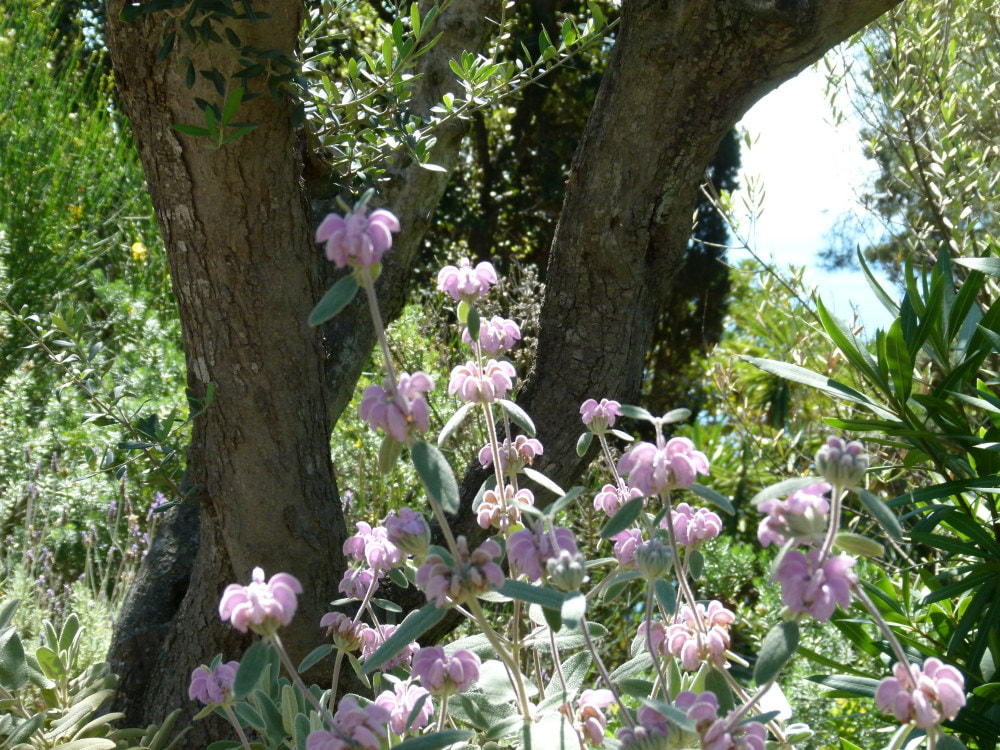
Phlomis ‘Marina’
After a very long Catalan lunch at the Yacht Club in the port of Blanes, we drove to Lloret where we met Gema Calveras, our guide for the visit to the Santa Clotilde Gardens which are set in a natural amphitheatre high up on a cliff top with outstanding sea views.
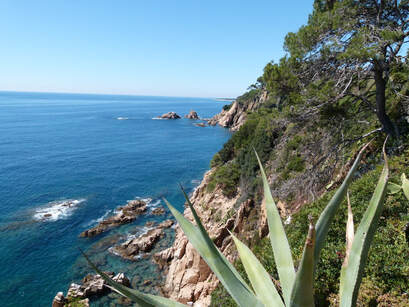
View along the coast
La Clotilde was created in the early 1900s by the Marquis of Roviralta and is named after his wife Clotilde, who died young. It was inspired by Italian Renaissance gardens and is very tranquil with hedged walks, avenues, statues and little corners as well as lovely views of the Costa Brava.
Our guide gave us a comprehensive introduction to the history of the gardens which are an example of the noucentista movement in Catalonia. She was particularly keen to talk about the personalities behind the garden and to explain some of the mythology. The bronze sculptures of mermaids by the artist Maria Llimona were striking, as were the marble busts in neoclassical style on ivy-covered pedestals.
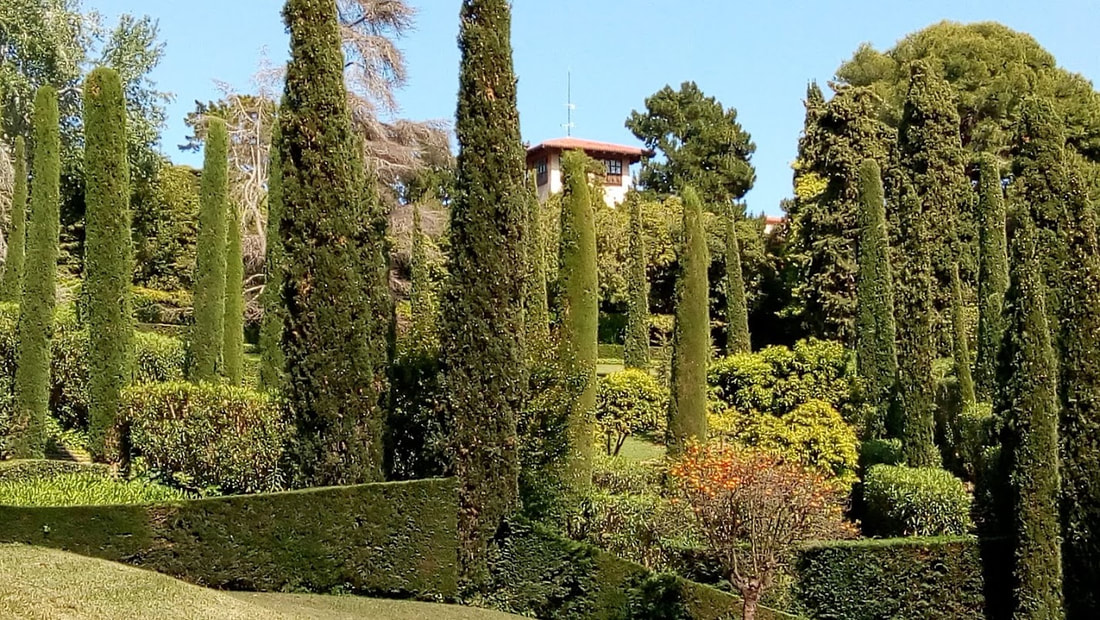
Cupressus sempervirens in abundance
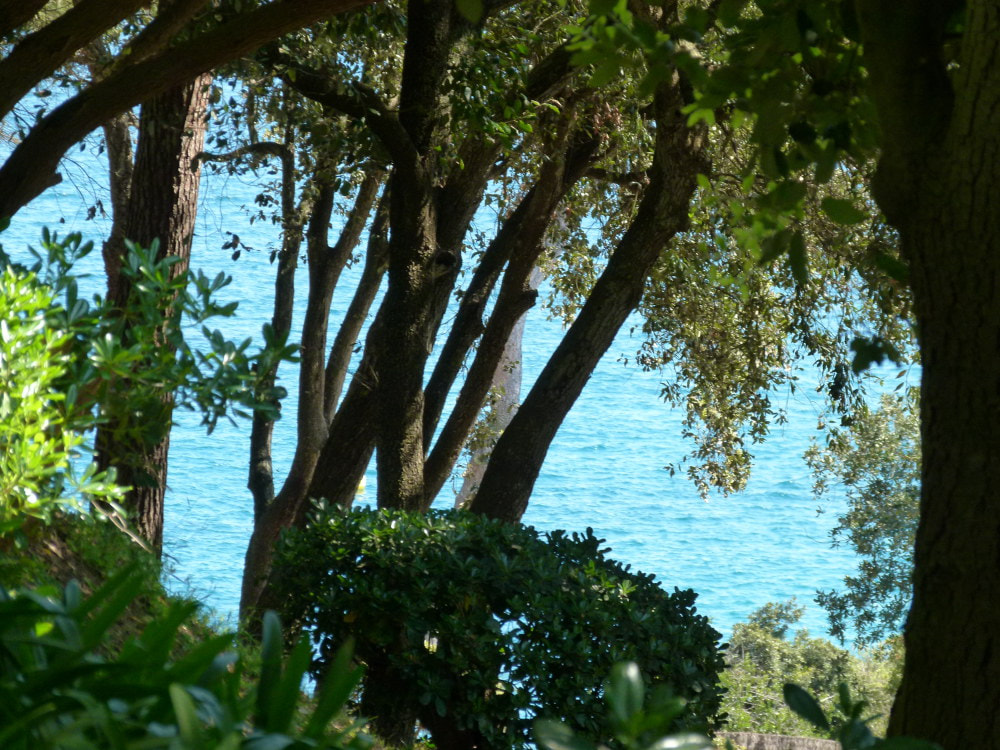
A glimpse of the sea
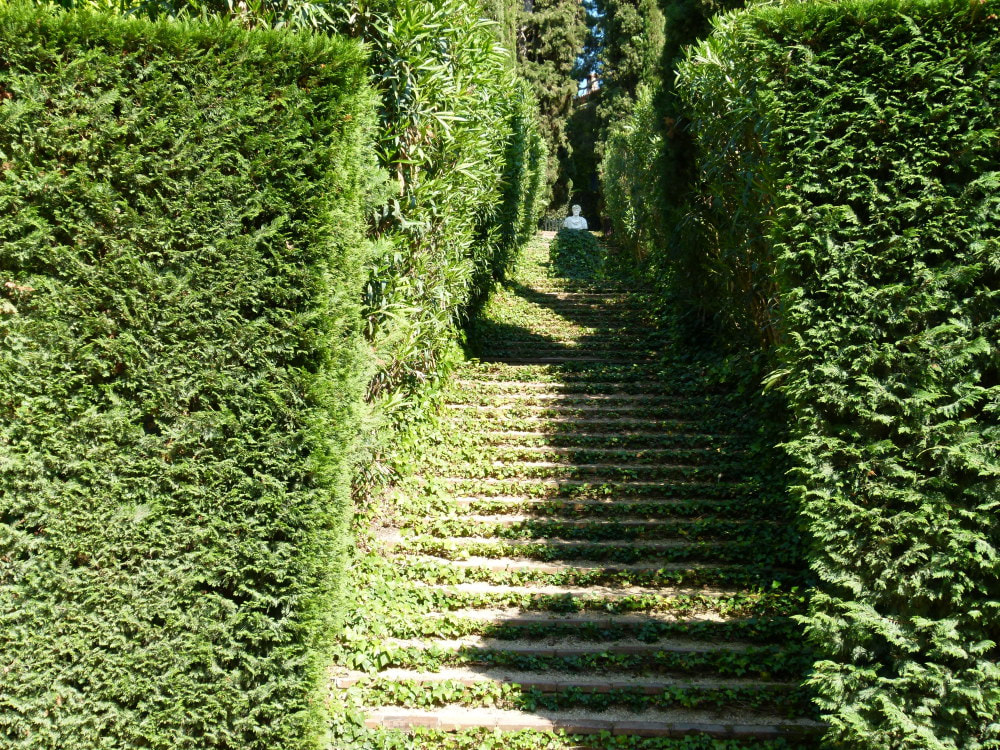
Ivy growing between the steps softened the lines
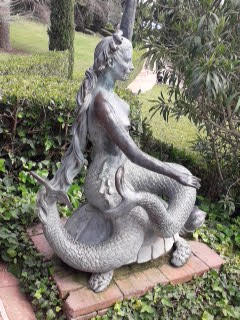
The mermaid with two tails
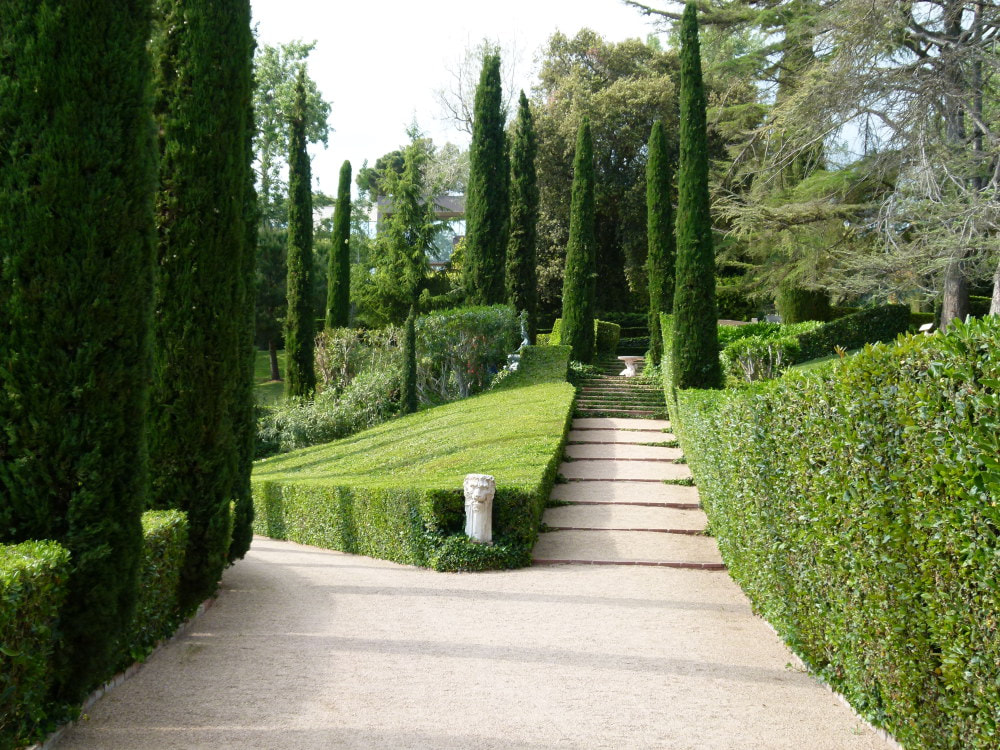
We wondered how this was trimmed
Before dinner, Carme Palahí and Francesc Pastó gave a talk on two aspects of the local cork industry. Carme is a biologist, specialising in botany. She explained that the cork oak, Quercus suber grows only around the Mediterranean basin and in Portugal, which is the largest producer, with Spain the second largest. She talked about the conditions in which the cork oak thrives. The trees can live for 150 years and can survive fire, with the thick bark acting as a natural barrier. For the first 30 years, the trees are left to develop before the first bark harvest. This and the second harvest are of poor quality and cannot be used for making cork stoppers, so it is 50 years before it can be used for stoppers and it is then harvested every 10 years. Regular harvesting encourages the production of good quality cork.
Francesc Pastó works for Oller, a major cork producer, and he gave a very informative talk about the industry from the way it is harvested using axes, through the whole process to the end product.
The industry has changed significantly over the years. It is known that corks were used by the ancient Greeks and Romans to seal large amphorae and the first commercial production of bottles began in 1650. From being a manual process, with artisans using knives to hand-carve stoppers, the industrial revolution came to the area with mechanisation leading to women being employed in the industry. The area around Palafrugell was the centre of the industry in Spain and used to be a very significant employer. The number of employees has declined owing to modernisation, but the demand for cork stoppers has gone up in spite of the increased use of screw- top bottles. Forty years ago, it took a week to produce one million stoppers, but now it takes less than a day.
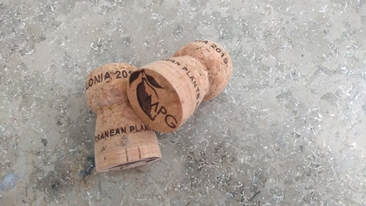
Francesc made a strong environmental case for the continued use of cork rather than plastic for bottle closures. The WWF has a strategic alliance with cork producers and argues that it is more important to preserve cork forests rather than any other environmental action. Cork trees grow in natural forests rather than plantations and fix more carbon than growing and processing them uses. Every time cork bark is harvested, it regenerates and absorbs more carbon dioxide. Cork is recyclable and can be ground and re-formed for use in insulation among other products.
The audience was captivated by the two speakers, who had put an enormous effort into the presentation and had brought many different exhibits, including a trunk of harvested bark, tools and various cork products. Francesc finished his presentation by giving everyone a souvenir champagne cork which had been specially printed with the MPG logo.
DAY 3 – Tuesday 21 May
After breakfast, there was a short drive to our first stop where we met Chris Witty who was born in Barcelona and has lived all his life there. Chris was our guide on this wildflower walk and the first flowers he showed us were Aquilegia vulgaris, a common garden plant in the UK, here growing right by the side of the road. The first part of our walk enabled us to identify a number of the common trees and shrubs, as well as several yellow-flowered plants including Pulicaria odora, Urospermum dalechampii, Coronilla sp.
We drove up through the Gavarres, remarking on how quickly the landscape and terrain changes. At the lower levels of the hills at the bottom of the valleys, we saw meadows, streams and fields and farmhouses. As the road got steeper the hillsides were covered with cork oak, holm oak and pine.
Our last stop took us through cork forest. Having been introduced to the harvesting and processing of cork the previous evening, we were able to appreciate the hard work which goes into producing such mundane objects and were impressed by two particularly monumental cork oaks.
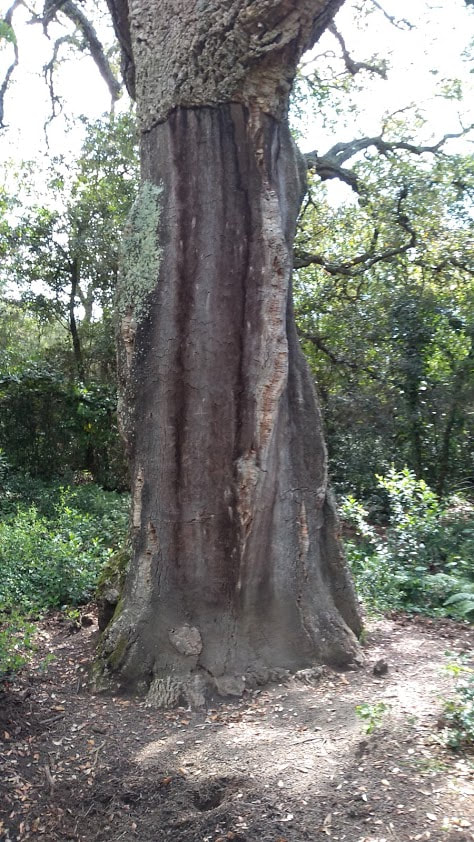
El Suro de l’Ameda
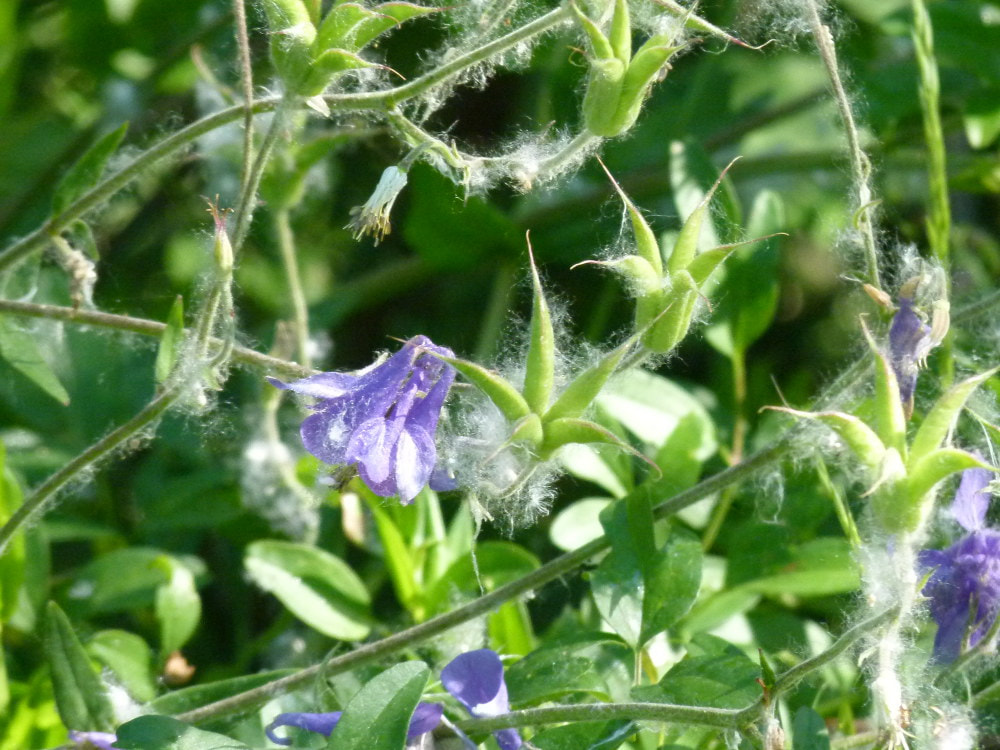
Aquilegia vulgaris
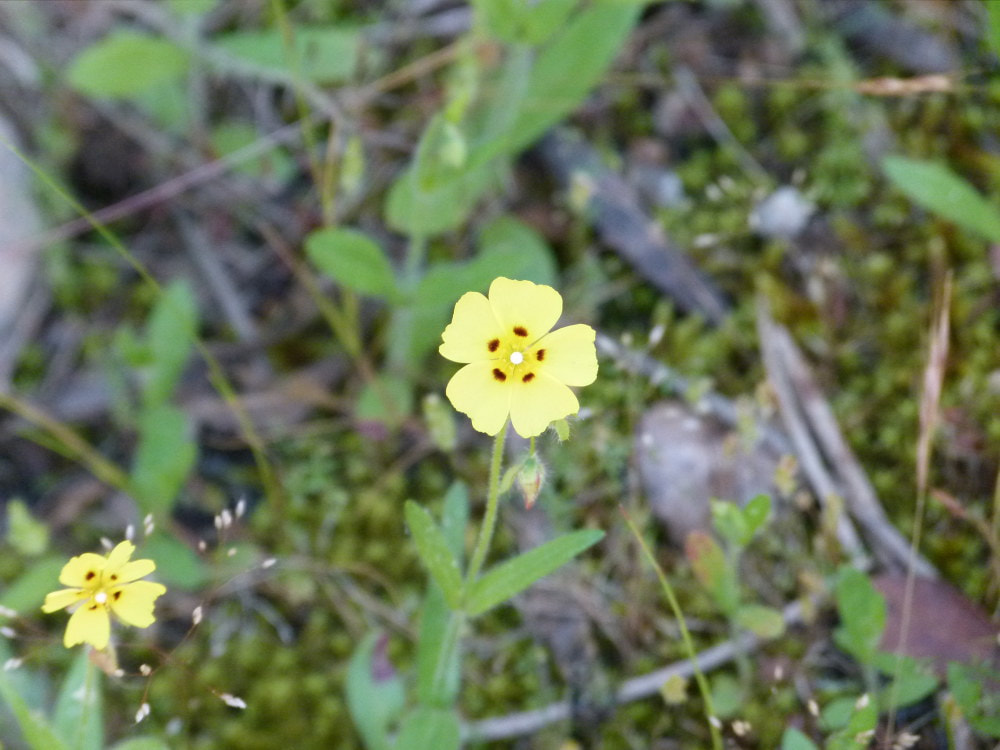
Helianthemum guttata
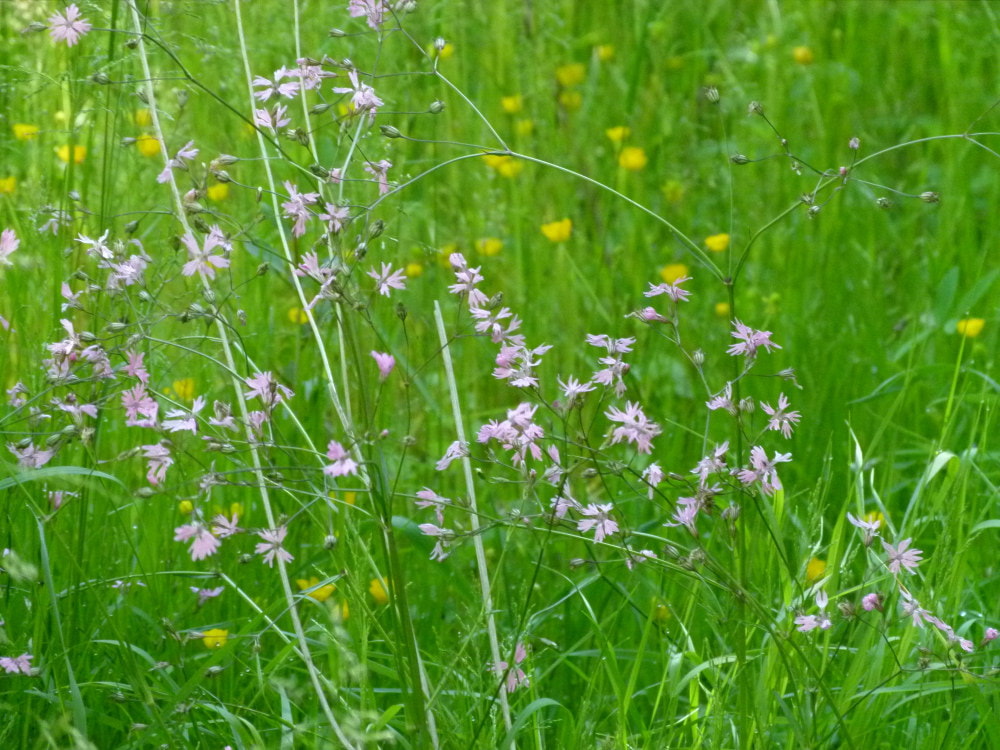
Lychnis flos-cuculi
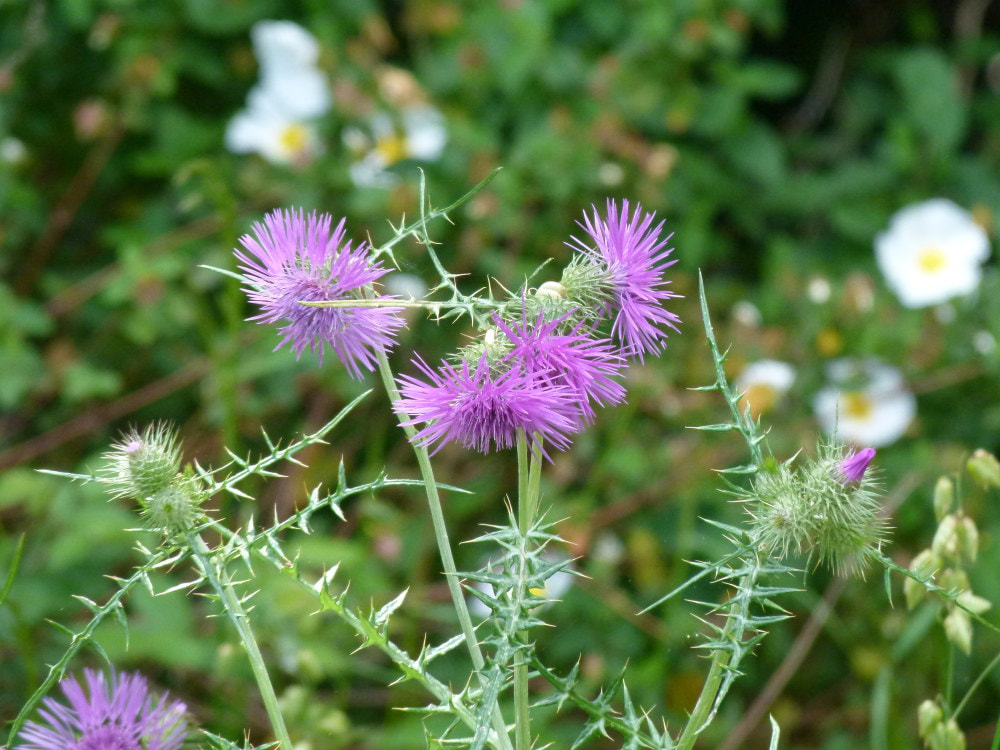
Galactites tomentosa
Lunch was at a residential golf resort with views over the Gavarres and we had perhaps the prettiest food of the trip.

Fruit salad doesn’t get much prettier than this
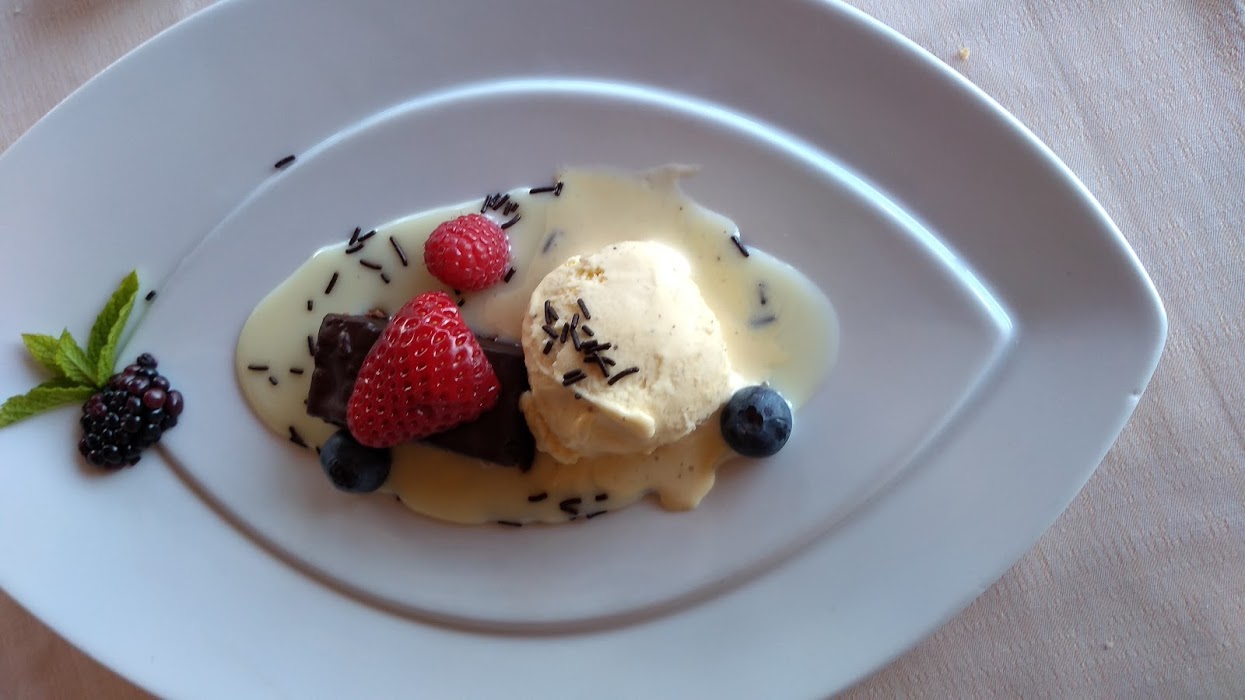
And neither does the brownie with vanilla ice cream!
After lunch we went back to Romanyà de la Selva, a small hamlet with a church and some pretty old buildings at the top of the Gavarres with a panoramic view over the Vall d’Aro. We met Jean-Patrick, a tourist guide who led a walk through the forest to explore the dolmens which are abundant in the area.
Although the walk covered much of the same ground as the morning, the emphasis in the afternoon was on the megalithic heritage. We started at the 10th century Church of Sant Martí de Romanyà, which was unfortunately not open, and then followed the Ruta dels Gegants del Bosc. This Route of the Giants of the Woods took us past a number of stone structures, including several burial chambers or dolmens and standing stones.
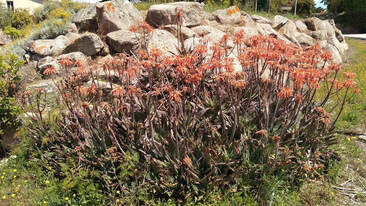
Colour in the carpark Aloe maculata
Before dinner at a restaurant close to the hotel, we met Carme Farré, garden designer, who gave us an introduction to the gardens we would visit the following day. Carme explained how the three gardens were acquired at different times beginning in 2014 and how she had to draw them all together to create a single unit that has breath-taking views of the Costa Brava.
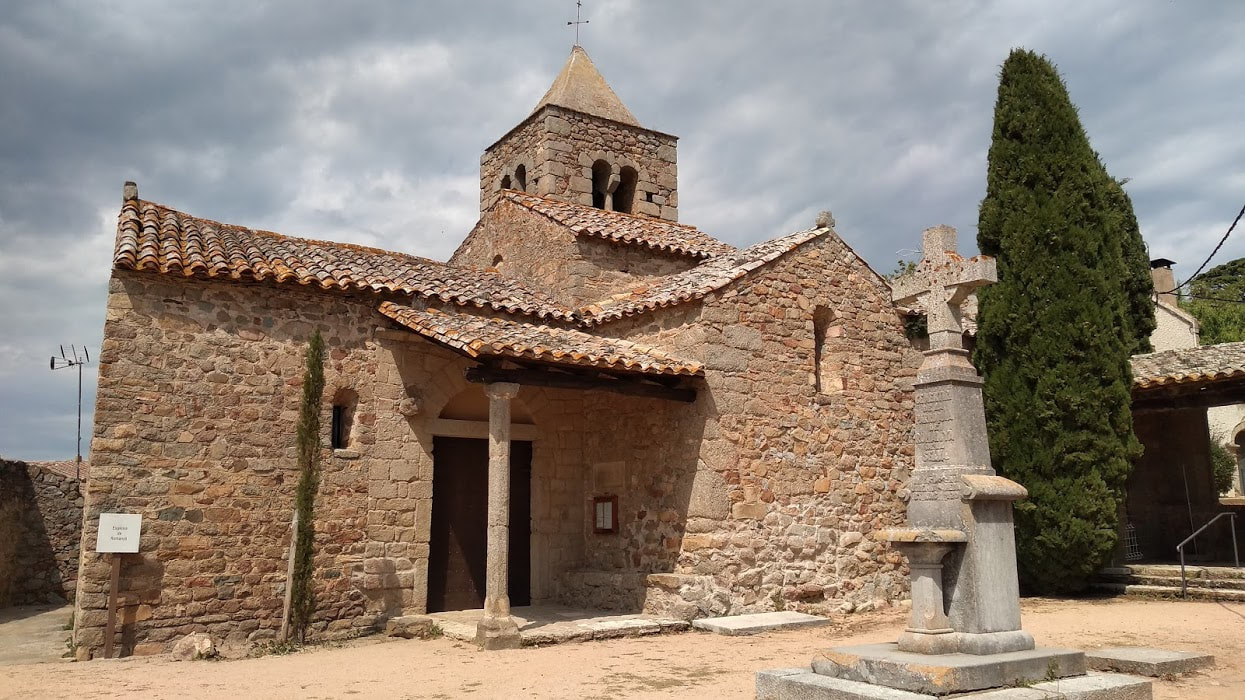
Esglesia Sant Martí de Romanyà
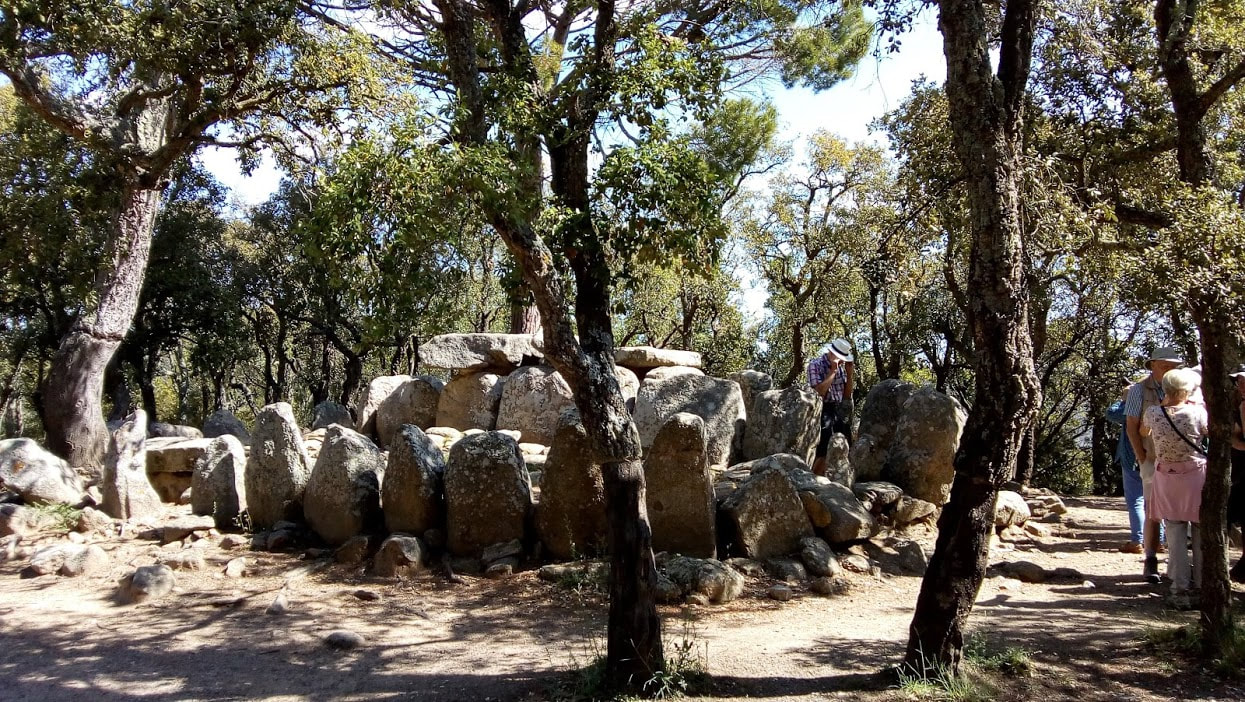
Dolmen Cova d’en Daina
The first house was of traditional stone, the second a more modern design and the third was built to the owner’s own design. The garden had to be designed to look good in July and August, the only time of the year that the owners visited and the preference was for a colour palette of blue, pink and white.
Day 4 – Wednesday 22 May
Today’s visits to a number of different gardens highlighted the challenges of designing, planting and maintaining gardens in the area.
We started the morning by meeting Mercé Trias, a Kew-trained landscaper and gardener. She took us to two gardens she had designed in a luxury residential golf resort, where the gardens have to be ‘Mediterranean’ in style. The first garden is set on a steep slope and merges into the golf course via a copse. There is no watering apart from a small lawn requested by the owner. The planting was a mix of shrubs and perennial plants and some mature trees. Mercé sought the views of visitors on a suggestion that a mature oak tree should be removed. The general feeling was that it should be retained as it added height to the garden and offered different growing conditions, although the current planting under the tree was struggling in the conditions. Alternative planting suggestions were proposed.
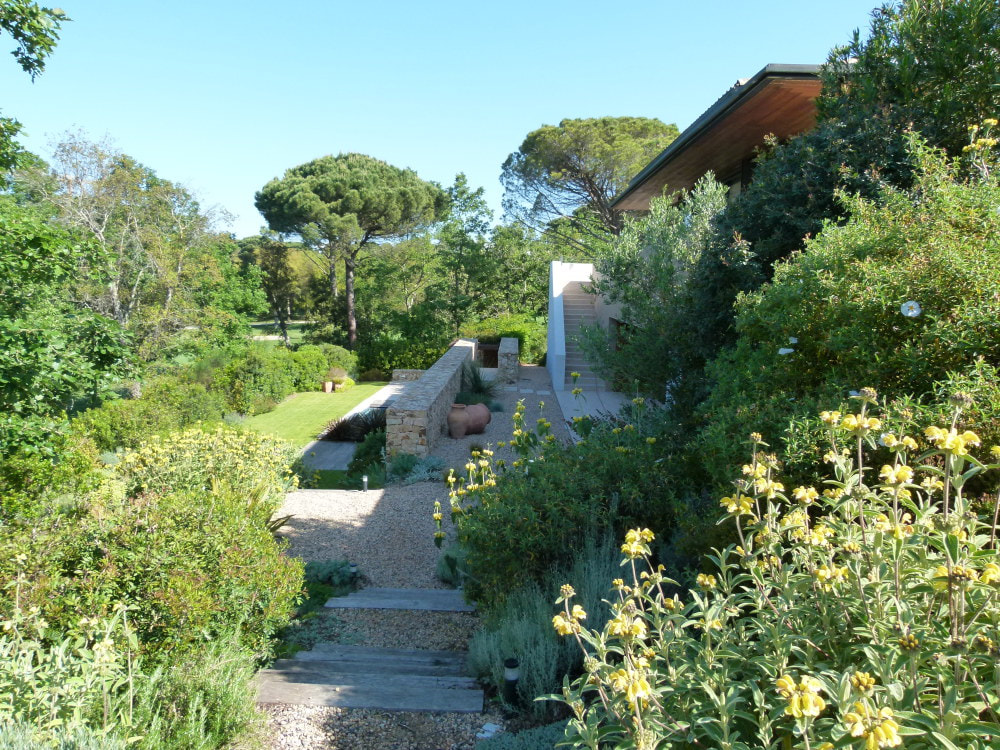
Steps down into the garden
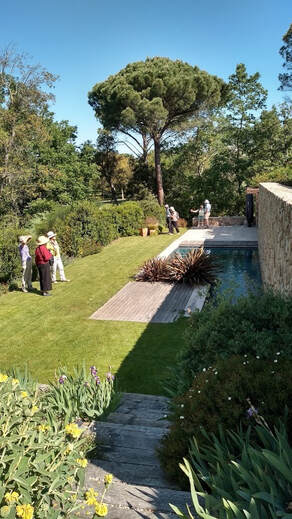
Members enjoying the garden
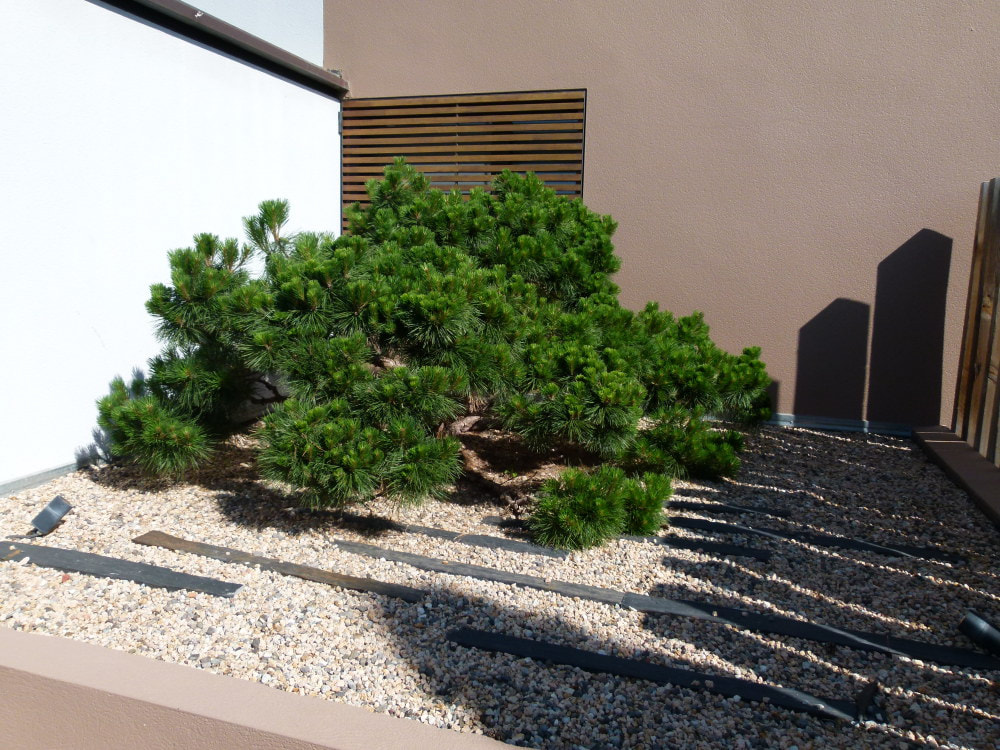
Pinus mugo
A coffee break was followed by a visit to Mercé’s recently planted second garden where the owners had particularly requested low-growing plants so that the view over the water to the golf course would not be obscured. She had introduced a number of herbaceous plants which are not widely grown locally, including Teucrium and Campanula, but was keen to hear further suggestions.
Mercé talked about the difficulties she had in sourcing interesting plants. She is envious of those of us who garden in the UK. Not only do we generally have a good climate for growing and gardening, but we also have access to a very wide range of plants from specialist nurseries. The range available in Catalonia is very restricted, as we could see from the rather formulaic planting around the resort.
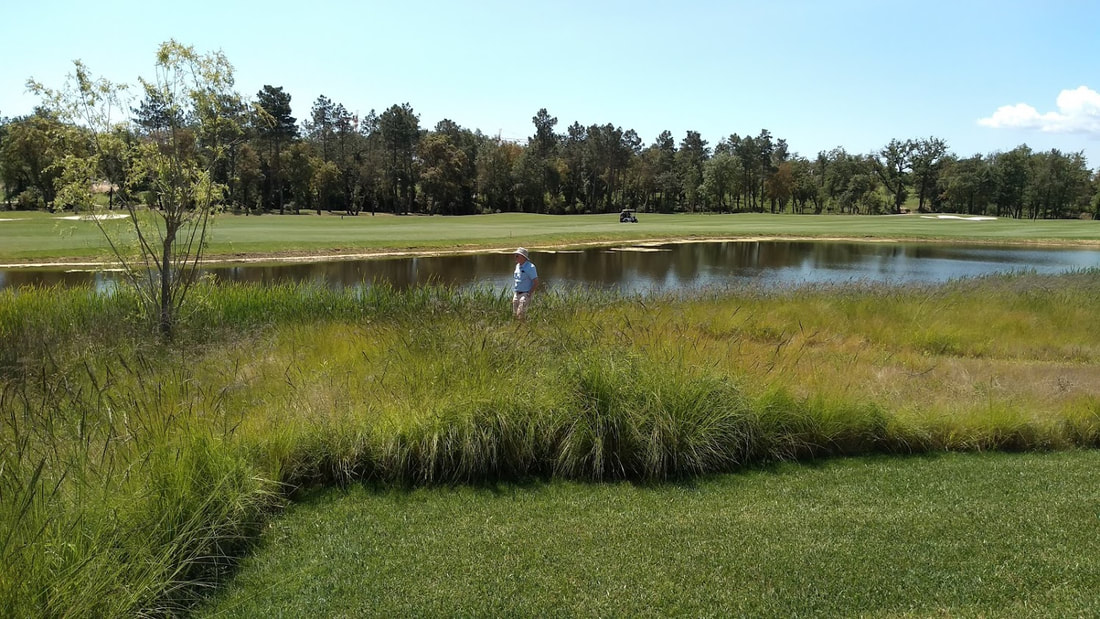
Exploring in the longer grass between the garden and the golf course
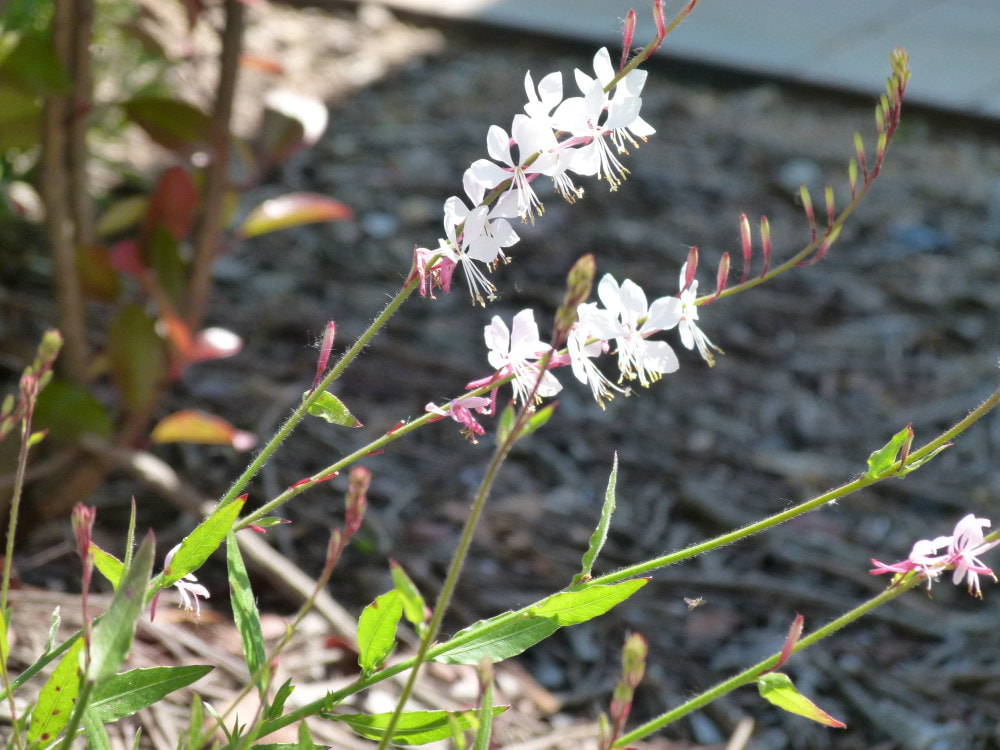
Gaura lindheimeri
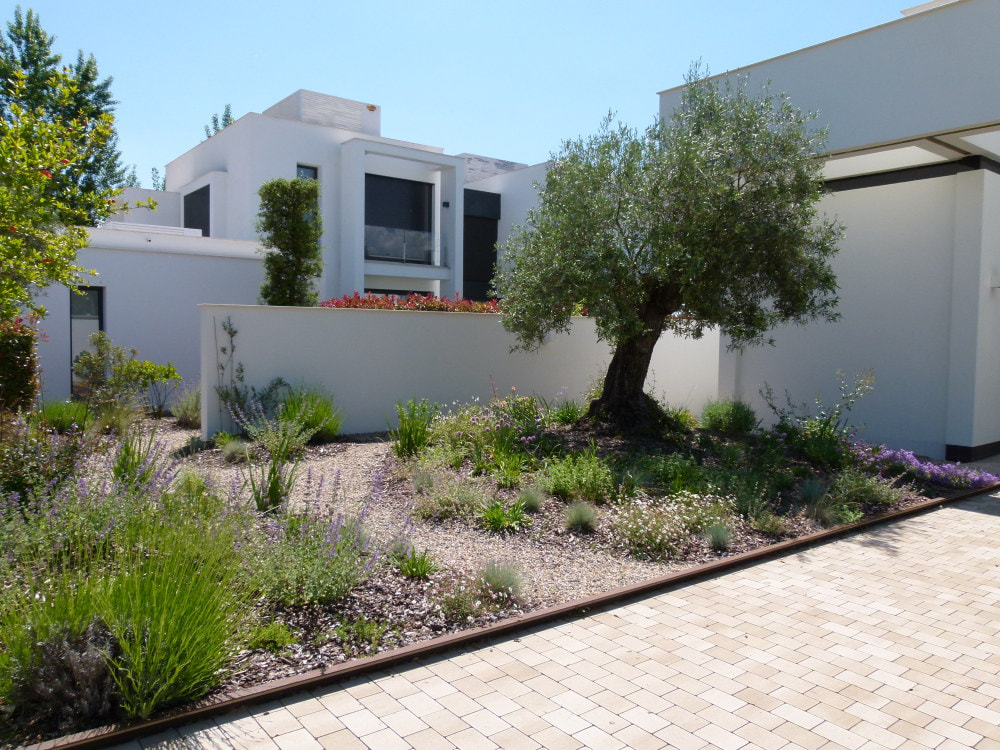
New planting in the front garden
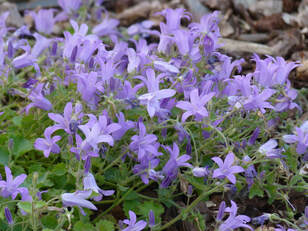
Campanula
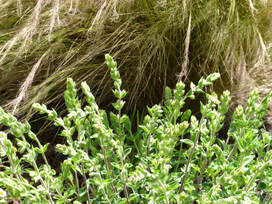
Campanula
We had lunch at a typical ‘Mas’ – a Catalan farmhouse converted to a restaurant. Our delicious and copious lunch was served in a private room with a traditional vaulted brick ceiling.
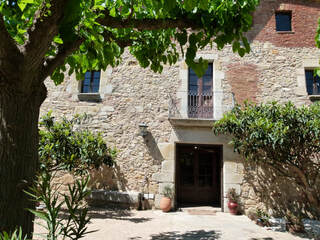
Entrance to the ‘Mas’ where we had lunch
After lunch we visited the garden which Carme had talked about the previous evening. The owner had initially bought one large stone house and had then bought the more modern neighbouring house and garden which gave him scope to build a third large house to his own design. The landscaping project specified seating areas with views of the coast; the use of minimal water for irrigation; wide paths to facilitate access; and the most important requirement was to have harmony between the three garden areas, although the planting varied. To reduce the amount of watering, existing lawns had been replaced with drought-resistant planting. The hard landscaping had been undertaken to a high standard and gave the garden an excellent structure which was softened by romantic planting.
The overall colour palette was blue, pink and white, although some existing red Rosa ‘Sevilla’ had been kept and were planted together by the entrance gate. Strong onshore winds meant that very tall plants were vulnerable, so great use was made of Agapanthus, Gaura, Salvia ‘La Luna’, Nepeta, Perovskia and Teucrium and existing plantings of Hydrangea had been extended.
A pergola based on the design of the one in the white garden at Sissinghurst was commissioned and has only recently been planted with white roses. Around the second house, more use was made of palms, Beschorneria yuccoides, and Dasylirion.
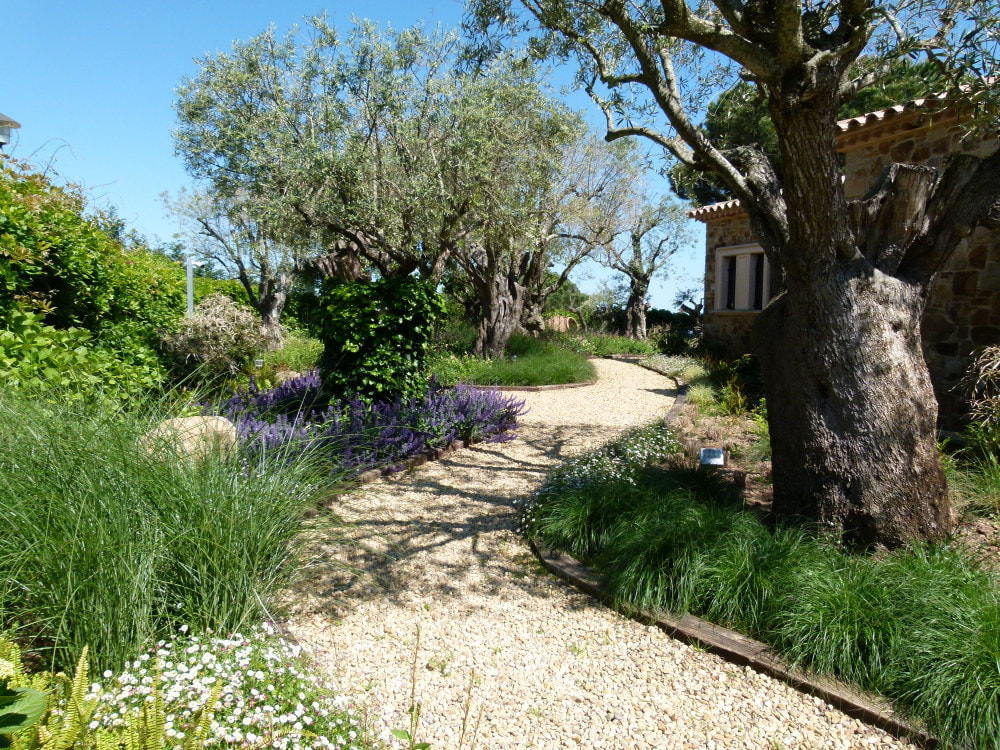
Olive trees as we entered the garden, underplanted with Nepeta fasseri
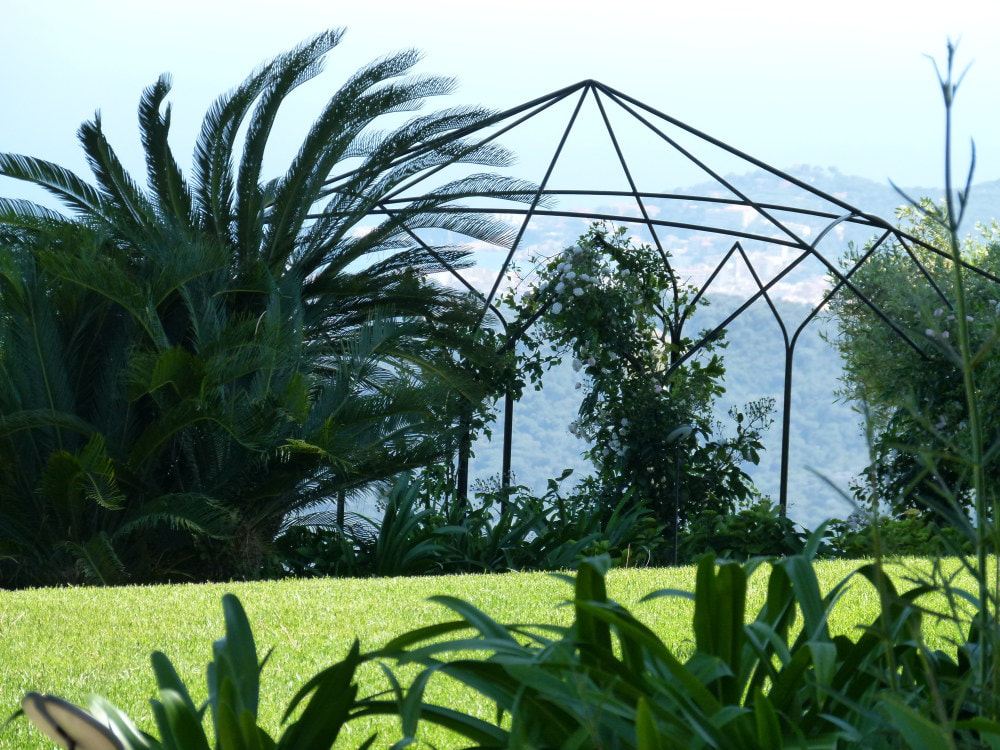
The ‘Sissinghurst’ pergola
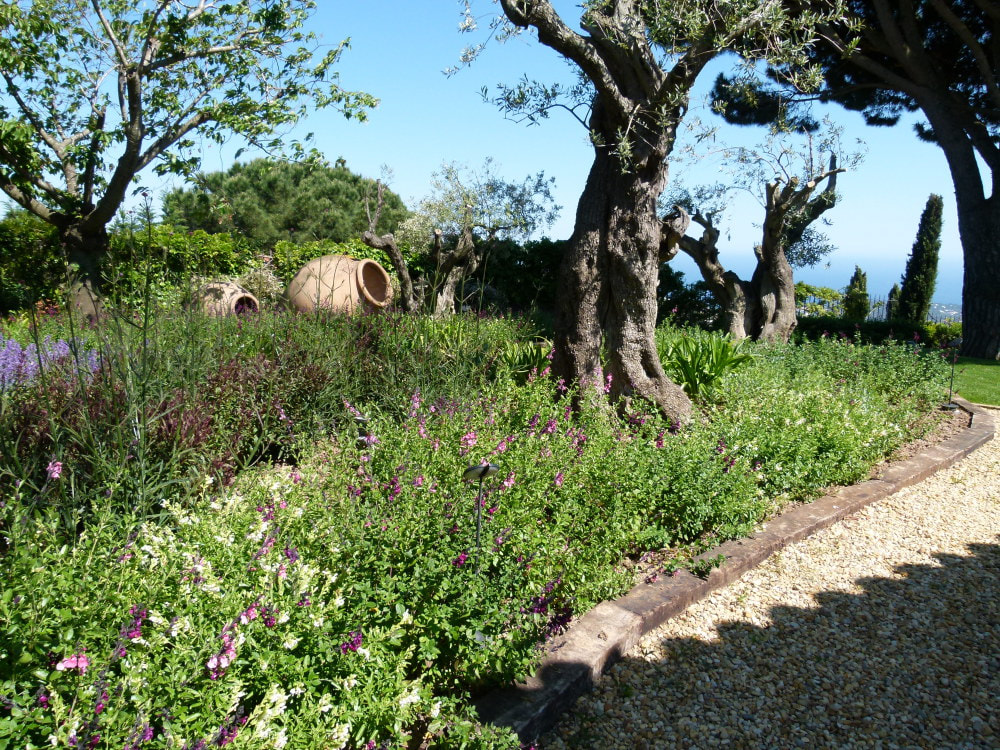
It was hard to believe the planting here is less than five years old
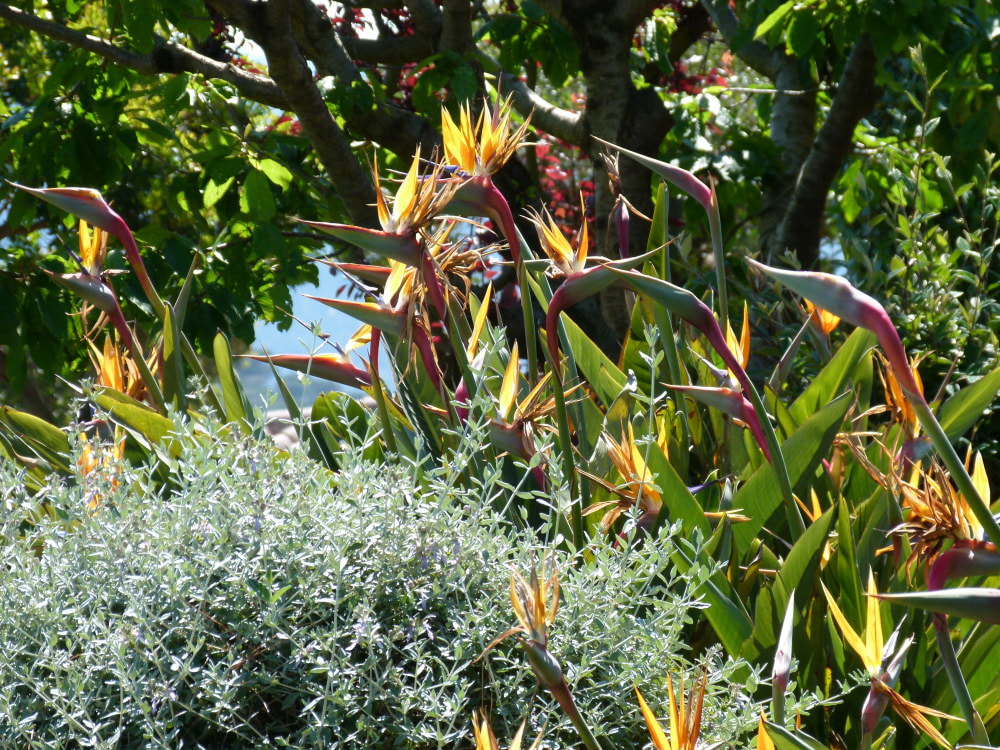
A striking planting of Teucrium fruticans and Strelitzia
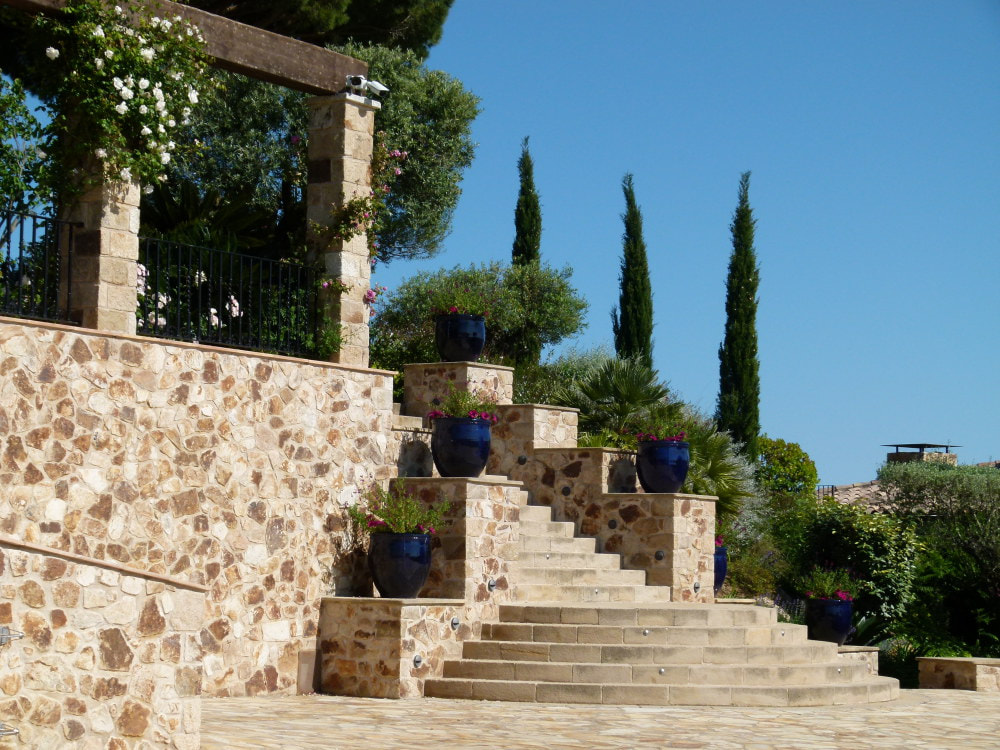
Immaculate hard landscaping
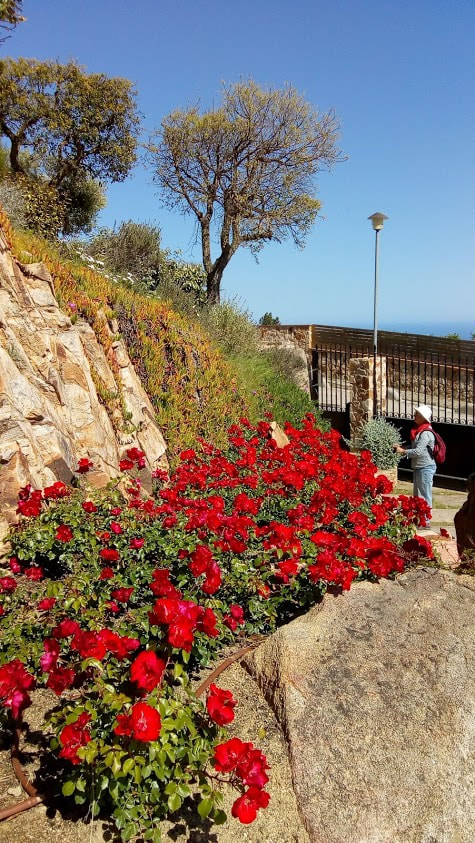
A splash of colour – Rosa ‘Sevilla’ by the front gate
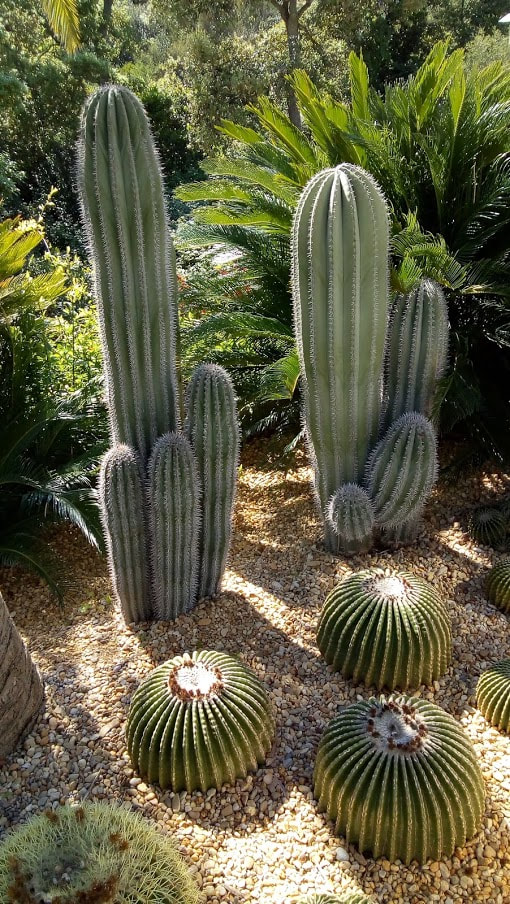
A large group of cactus growing near to the swimming pool
For security reasons, we were asked not to take pictures of the private properties whose gardens we visited. This was a pity as these three houses were so different and, while not appealing to everyone, the newest house was certainly eye-catching. It was hard to believe that the work on the gardens had only begun in 2014, but clearly no expense had been spared. We were grateful to Carme for giving us the introduction to these extensive gardens the previous evening and accompanying us on the visit
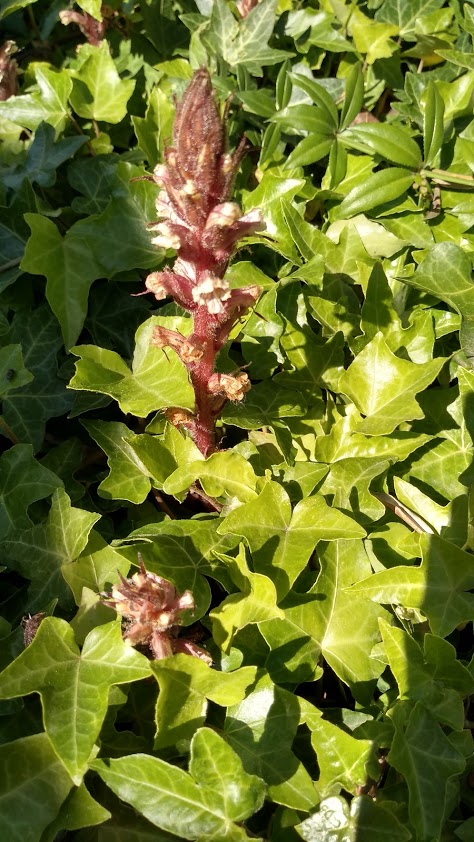
In a hidden corner Orobanche was growing through ivy
The final visit of the day was to a garden of very different scale and planting. It was a family garden and the owners had asked Mercé to retain as many of the original pine and eucalyptus trees as possible, some of them very large. This garden felt relaxed, with space for children to play and some of our party took the opportunity to test out the sun beds by the pool.
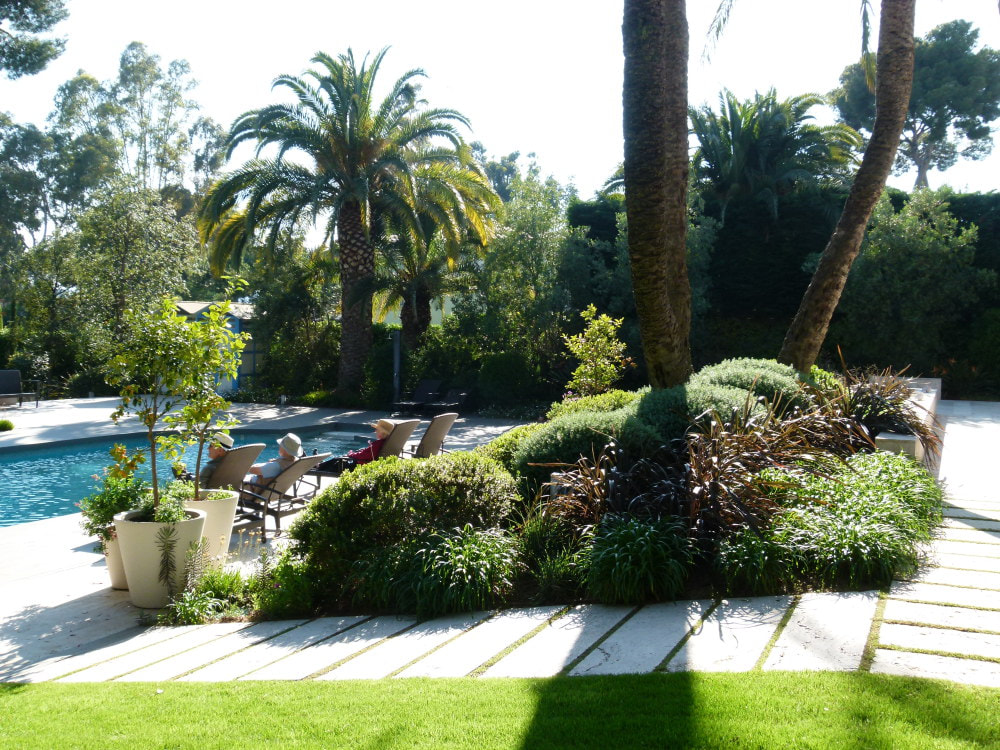
Testing out the sunbeds
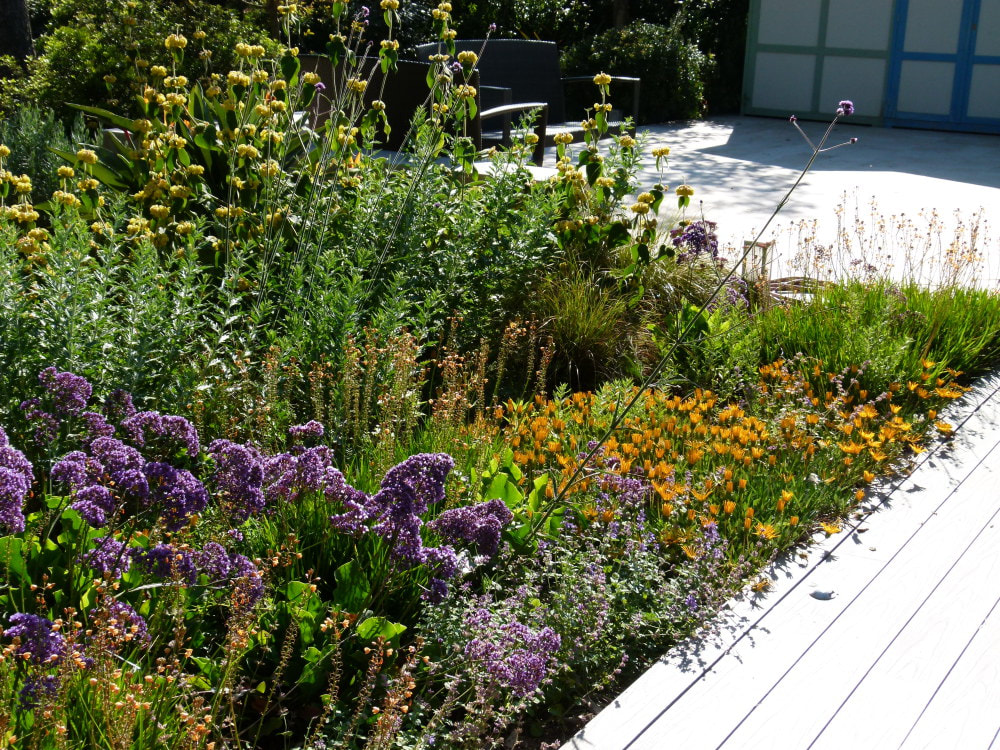
Colourful planting
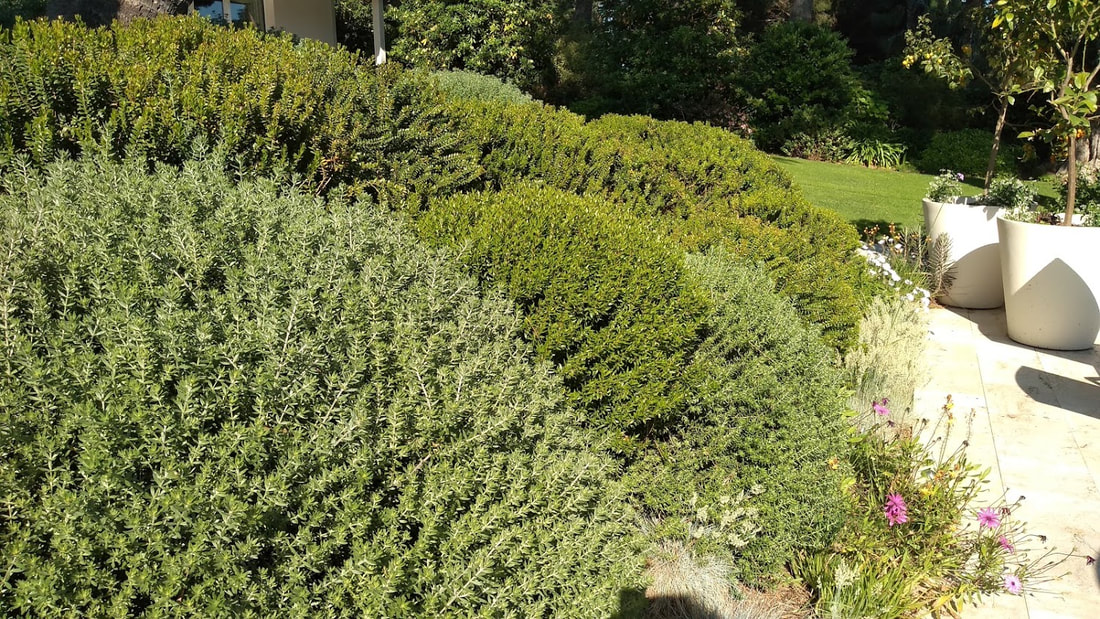
Gentle curves
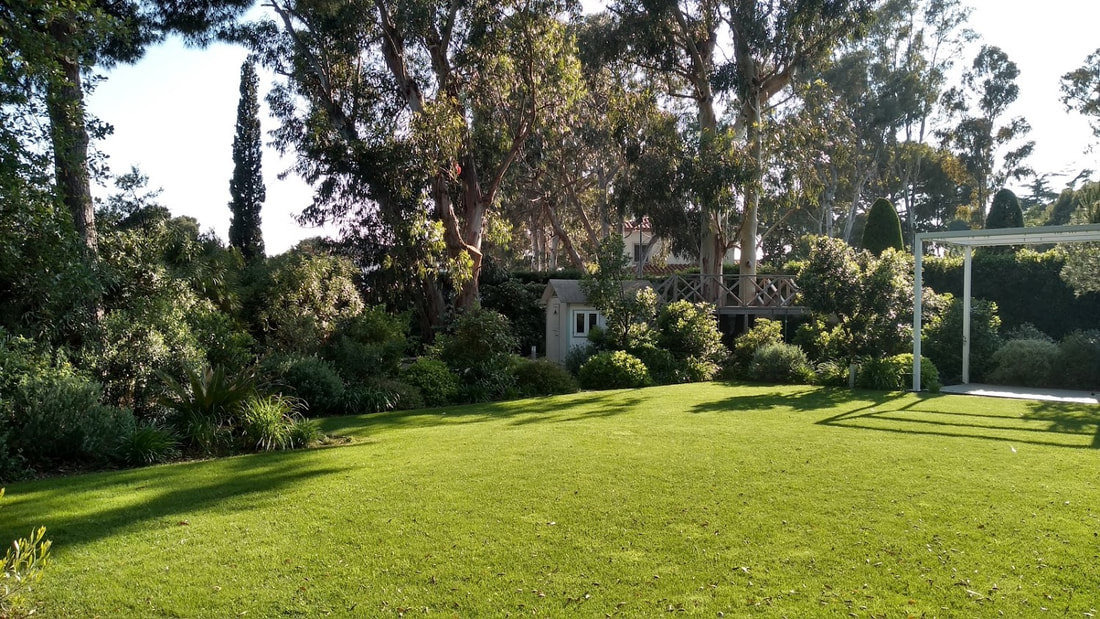
Children’s playhouse under tall trees
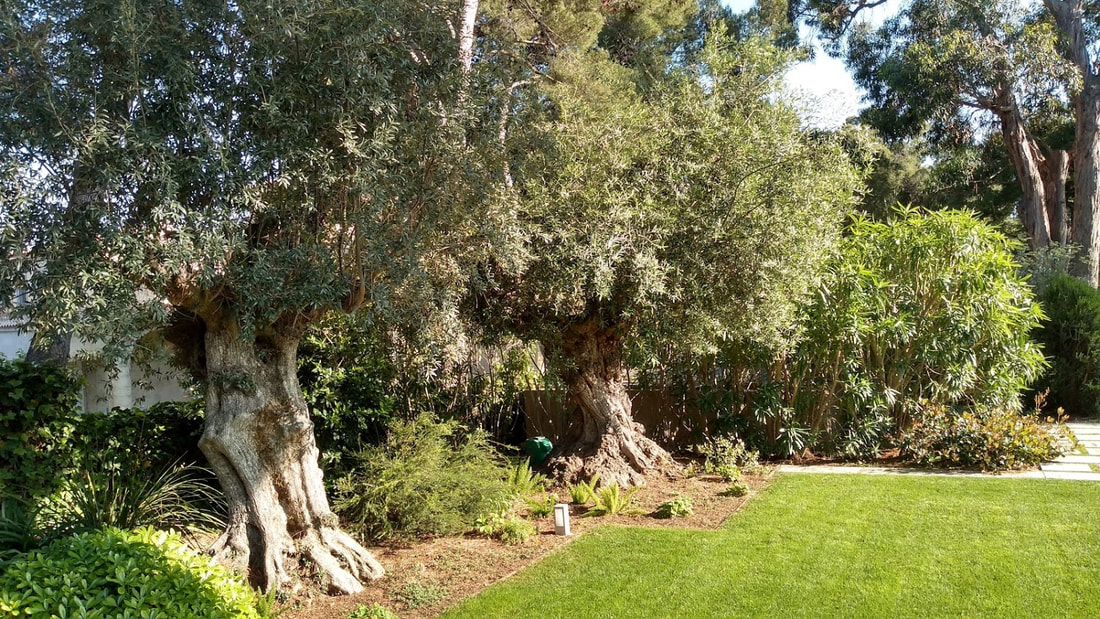
Olive trees
A number of gently pruned evergreen shrubs in front of the house separated the terrace from the pool and the rest of the garden. It was an attractive way to treat Myrica quercifolia and Ligustrum texanum. Rhaphiolepis had been tried, but found to be too big. Once again, this garden was maintained to look good for just a couple of months in mid-summer when the family visited.
A ten-minute drive took us back to the hotel in time to prepare for our last dinner at the Hotel Costa Brava
Day 5 – Thursday 24 May
After an early breakfast we said goodbye to the Hotel Costa Brava and drove up successively through cork oak, pines, chestnut, European oak, beech and holly into the Montseny Natural Park. We met Chris Witty for coffee and then started on the second of our wildflower excursions. We made several roadside stops and saw many different flowers, including Narcissus poeticus, Viola bubanii, and a large stand of Orchis picta. Chris had checked the area the previous week to ensure that we stopped at the right places to see good flowers. He explained that the rain in the intervening days had led to a number of species coming into flower. We were also fortunate that the cold spring had delayed some flowering.
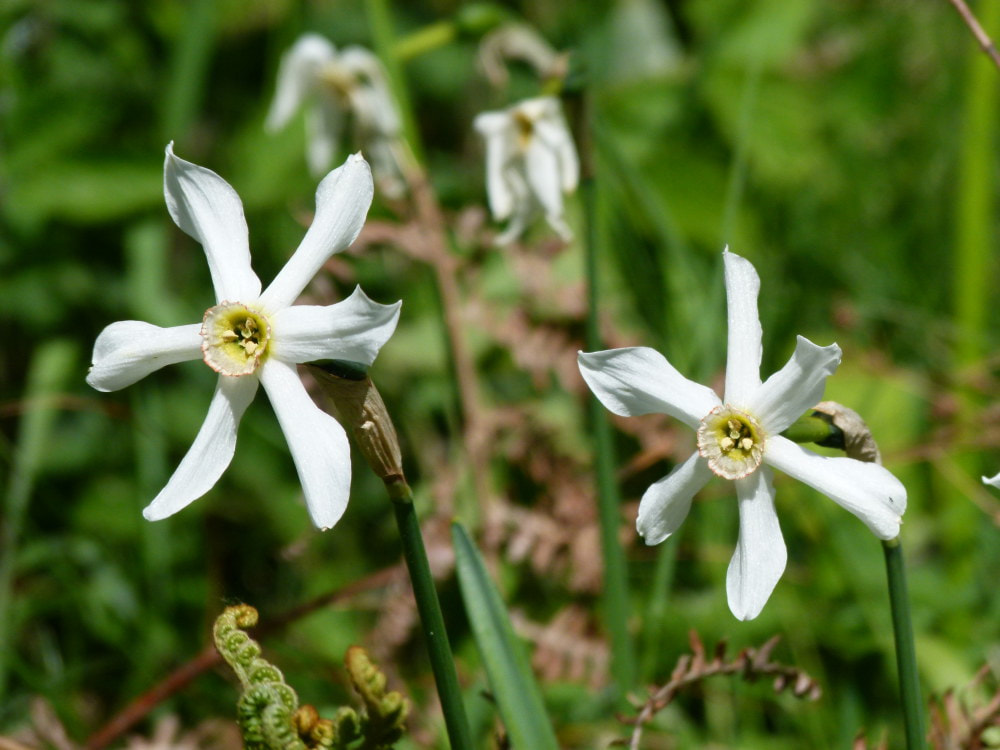
Narcissus poeticus
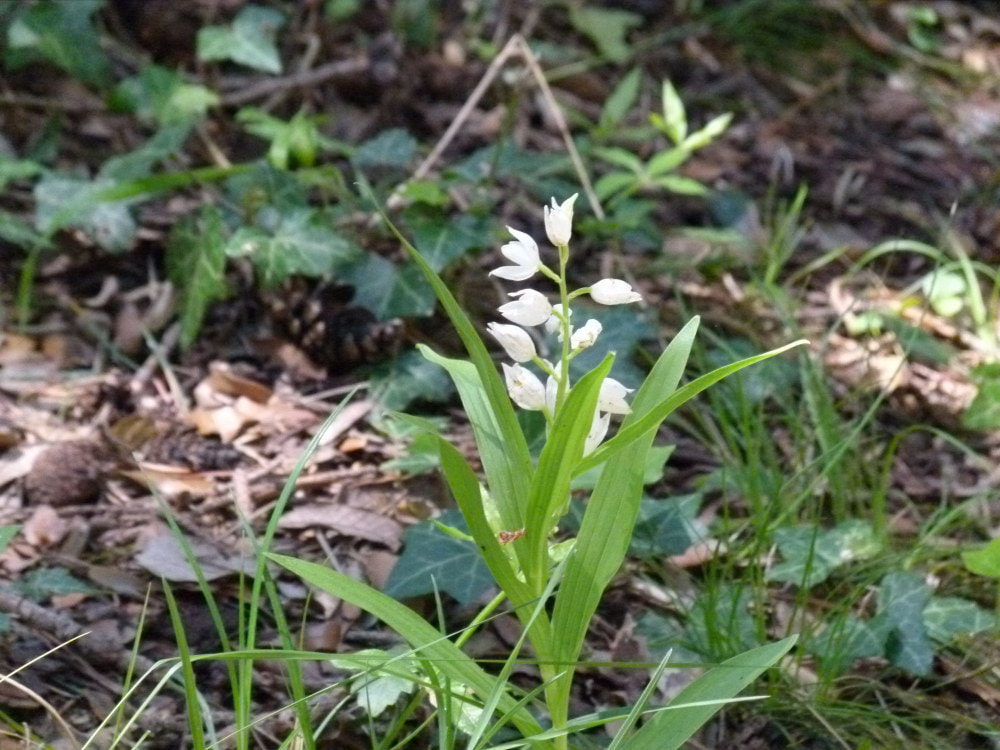
Cephalanthera longifolia
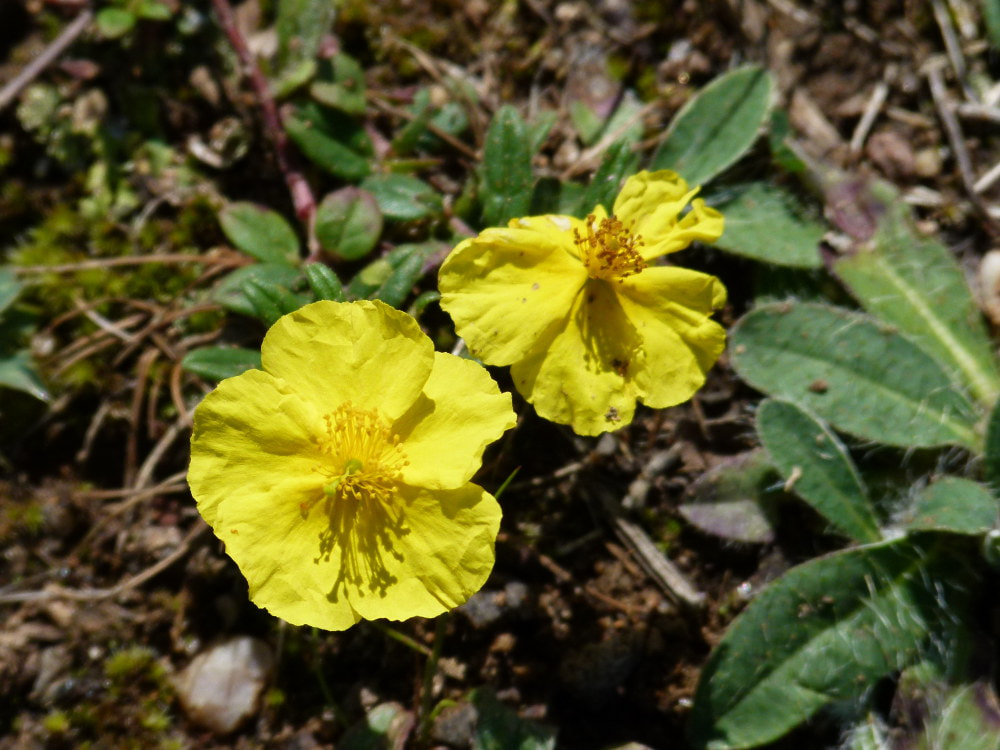
Helianthemum nummulariu
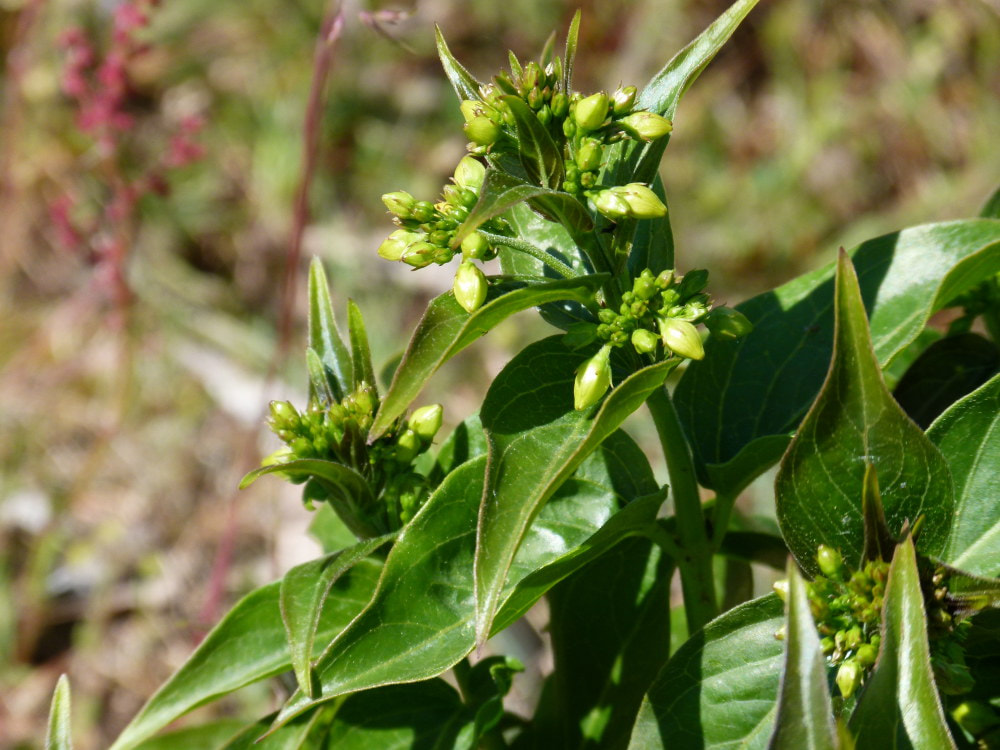
Vincetoxicum nigrum
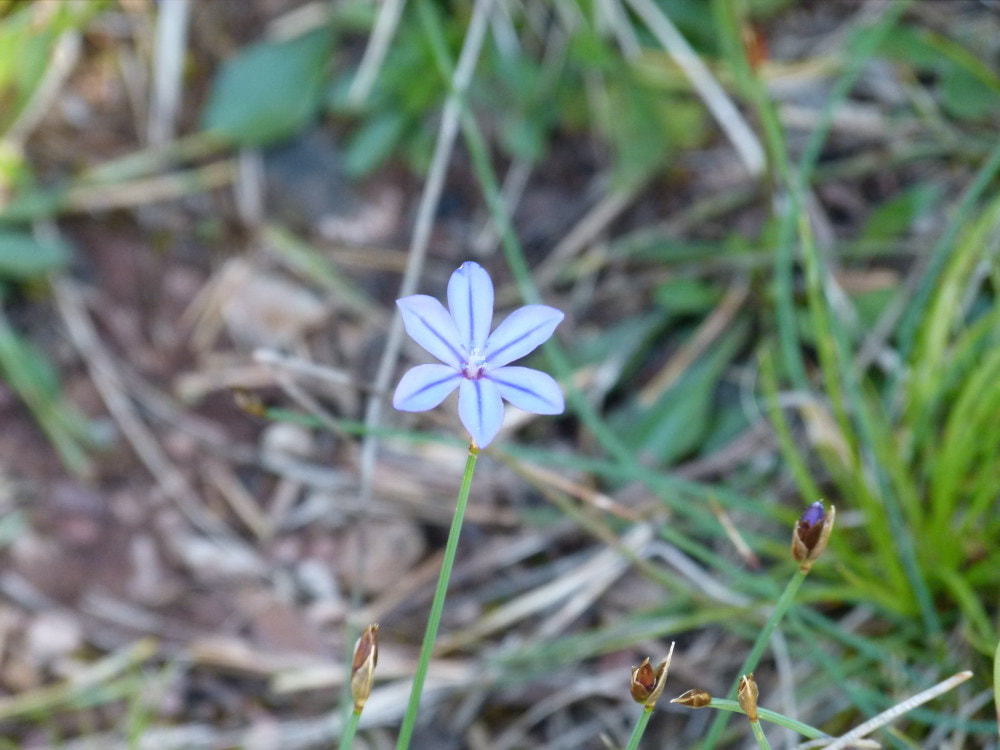
Aphyllanthes monspeliensis
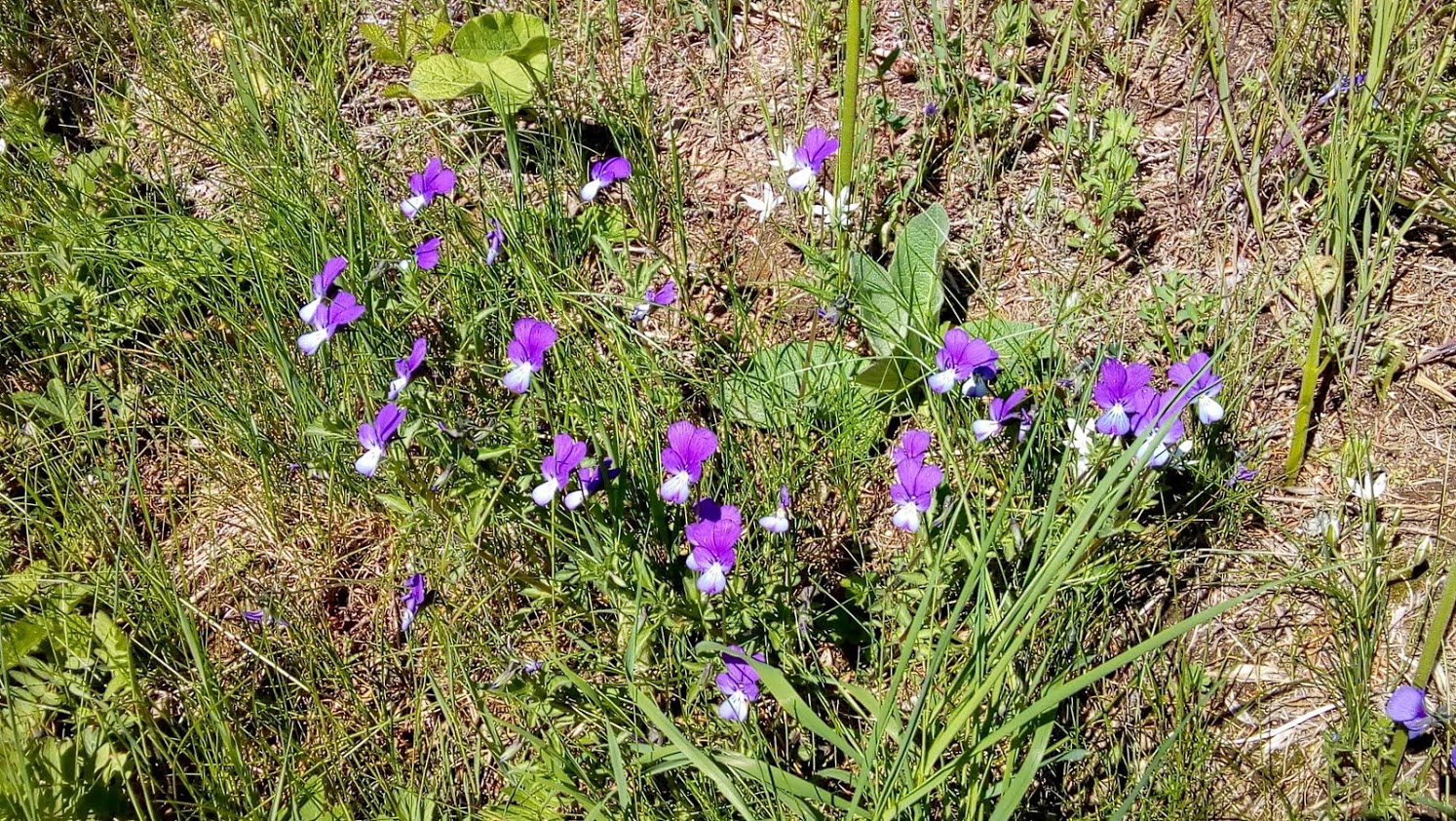
Viola bubannii
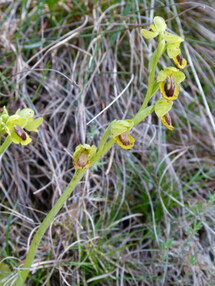
Ophrys lutea
When we reached the village of Seva, some of the group decided to set off and walk to the restaurant, but had underestimated the distance and the heat, so were grateful to the driver who made a couple of extra trips to pick them up and deliver them to Castell del Brull. Several of us stayed with Chris for a final fairly short walk close to the road and were delighted to find some very special orchids including the Violet Bird’s Nest, Limodorum abortivum and the endemic orchid Ophrys catalaunica (syn. O. bertolinii ssp. catalaunica)
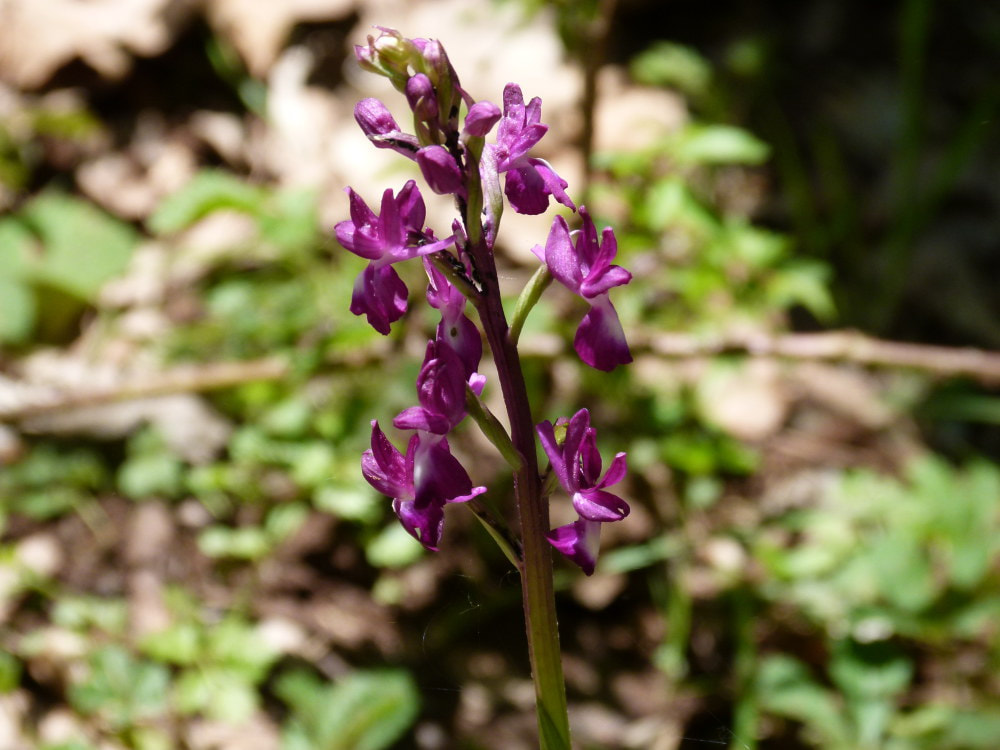
Orchis laxiflora
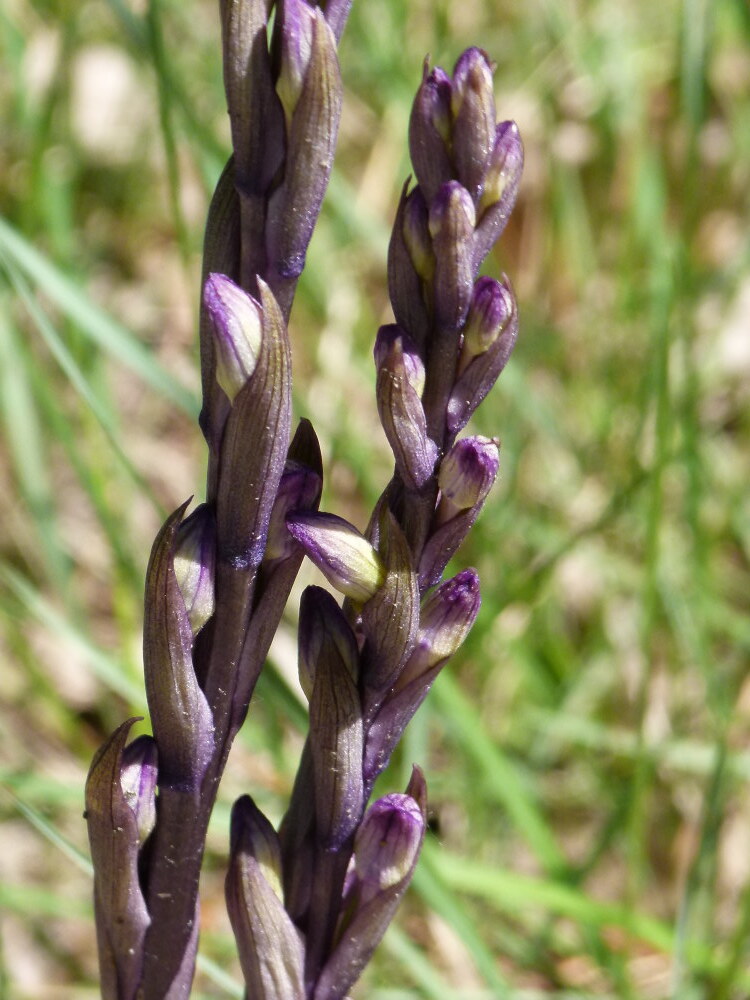
Limodorum abortivum
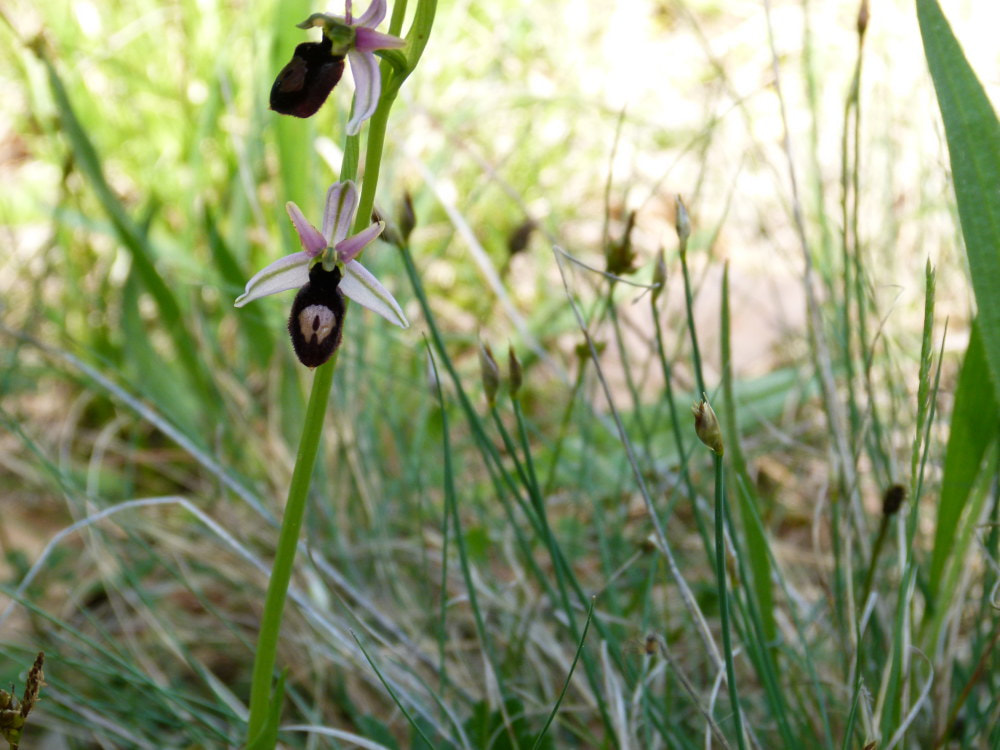
Ophrys catalaunica
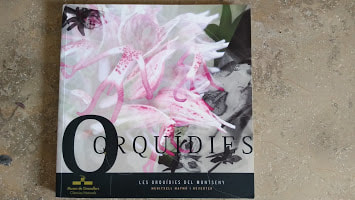
Orchids of Montseny – a generous gift from Chris Witty
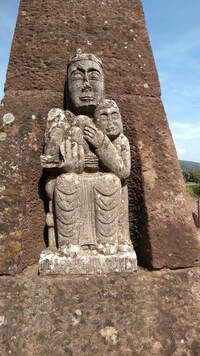
Our excellent lunch was at El Castell del Brull, a converted castle with superb views. By this time, we had gone up from sea level to 850 metres.
After lunch, we thanked Chris for his company and for the effort he had put into preparing for our visit. His local knowledge was very valuable and he generously gave the group a copy of a book on the orchids of the Montseny, which made subsequent labelling of our pictures somewhat easier.
A 90-minute drive took us to the Parador Nacional de Cardona, a hotel created in a converted medieval fortress set on a high promontory above the small town of Cardona. Dinner was served in the grand medieval dining hall.
In the 1920s, the Spanish government set about promoting and increasing tourism in some of the more remote parts of the country by converting historic buildings into luxury hotels. While most are conversions of castles, palaces, fortresses, convents, monasteries and other historic buildings, the first one to open, in 1928, was a newly built hunting lodge in the Gredos mountains. There are now a total of 95.
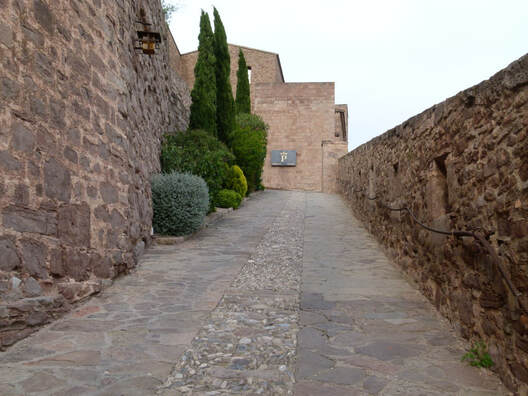
The main entrance to the hotel is not accessible by coach
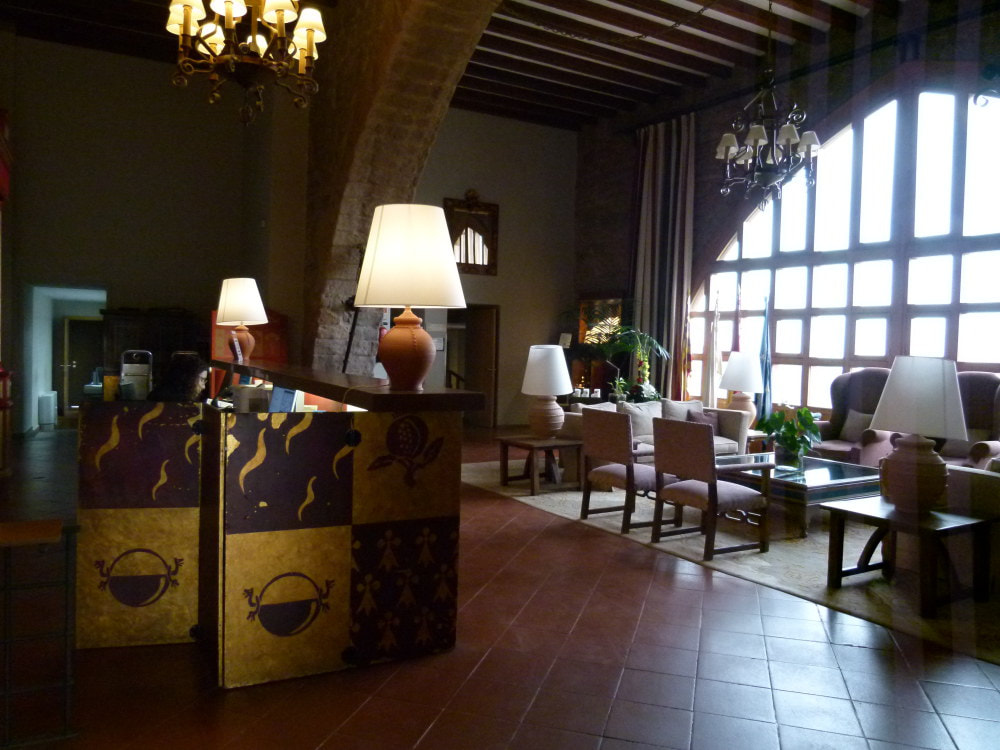
Reception area
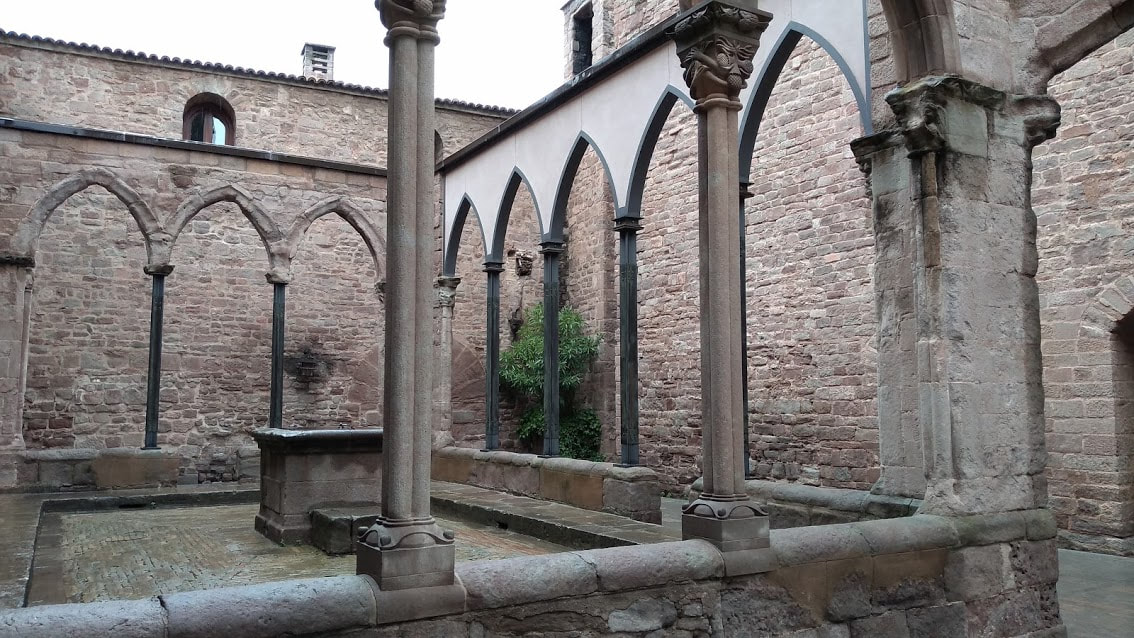
The cloister within the castle
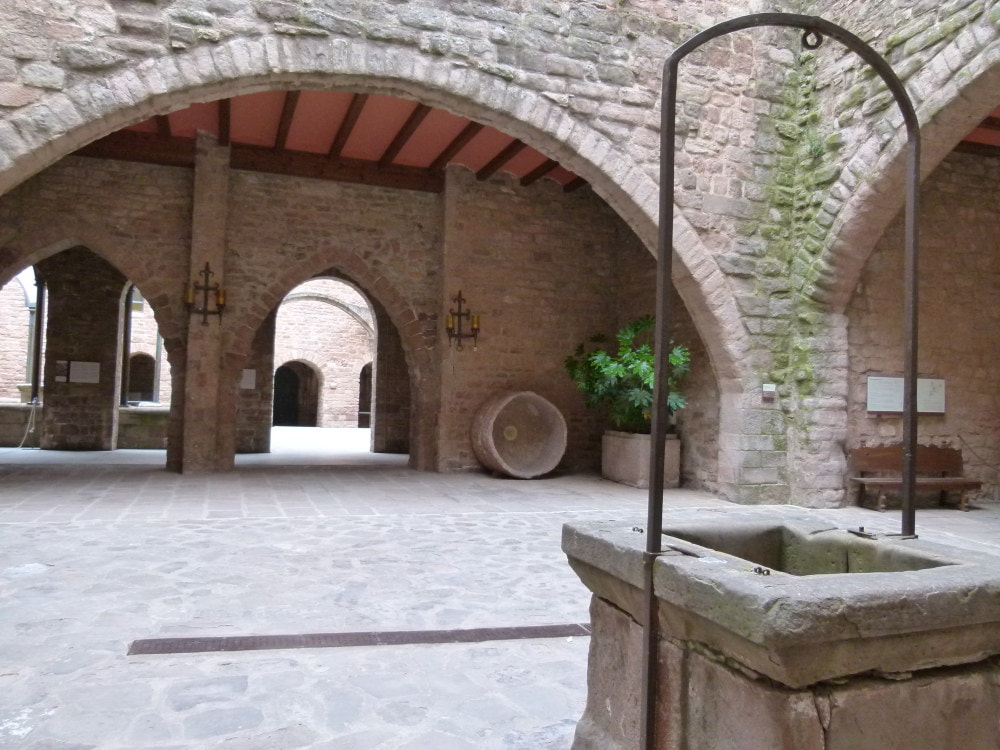
Courtyard and well
Graham and I regularly used to go on touring holidays in Spain, driving from parador to parador, so this was a nostalgic return to a place where we had last stayed in the 1980s. We were pleased to note that not a lot had changed and the standards of accommodation and meals remained very high. We welcomed the spacious room, after the rather cramped accommodation at the Hotel Costa Brava.
Day 6 – Friday 25 May
We were up early to make the most of the abundant breakfast buffet, before Pat Mills arrived to accompany us to his home ‘Pedrafita’. We set off in torrential rain and on the way there, Pat explained the history of the textile industry in this part of Catalonia. The industry was set up following the principles of Robert Owen, the Welsh textile manufacturer, philanthropic social reformer, and one of the founders of utopian socialism and the cooperative movement. Owen is best known for his efforts to improve the working conditions of his factory workers and his promotion of experimental socialistic communities. We made a short diversion to drive past two ‘Colonias’ – textile mills and communities based on the model of Owen’s New Lanark in Scotland. The industry collapsed from the 1950s to the 1970s and many of the buildings in these Colonias are now used for completely different purposes.
Pat went on to tell us that he had bought his property some 45 years ago as a week-end home while he and his wife Val lived and worked in Barcelona. The house is down a long track, there is still no mains water and the soil is thin, stony and slightly alkaline. Winter temperatures often were as low as -15°, although in recent years that is no longer the case, and summers are hot and dry. The rainfall is between 400 and 500 mm a year and Pat said that it usually all comes at once. All the water for household use and for the garden has to be collected and stored. Pat had developed the garden over several years before he and Val retired and they moved there permanently.
Over the years, Pat had become somewhat obsessed with old roses, planting many hundreds, but the failure rate was very high. He gave up on them and his planting became more varied, as he bought between 600 and 1200 plants every year, about 40 per cent of them plugs. He admitted, though, that he has started buying old roses again.
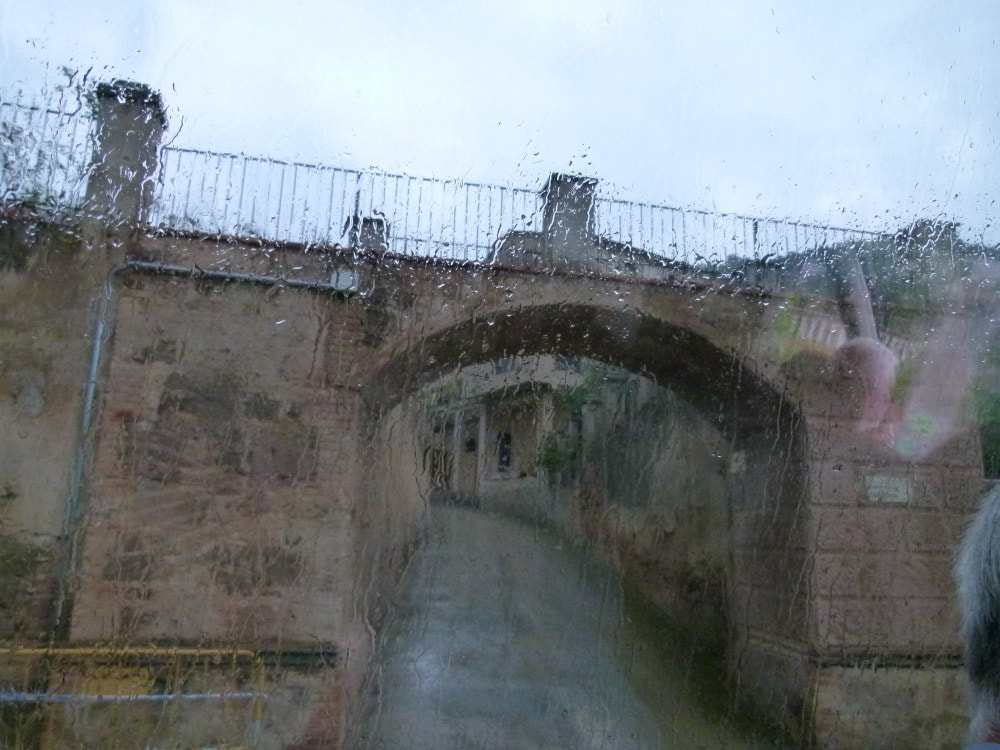
The overriding factor in his philosophy is ‘Will it survive?’ Then, and only then, ‘Will it grow well and look good?’ We walked around the garden, stopping to look at unfamiliar plants and seeking identification.
It was still raining heavily, so we were grateful for the shelter provided by the loggia when we broke for coffee and Pat told us more about how he copes with lack of water and low soil fertility. The garden cannot be watered after the plants have been settled in so he buries the empty pot next to each new plant and any watering is into the pot so that it reaches the root zone rather than being wasted on the surface. The pot is also a handy receptacle for the label, helping us with identification.
Pat and Val had been helped in the run-up to our visit by Ben, recently retired from the role of head gardener at Glendurgan, and his wife Debbie. They are taking the opportunity to travel by volunteering to work in different locations in exchange for board and lodging.
Pat described his garden as ‘a one-hectare place where I kill plants’. Nevertheless, it is a very special garden with hundreds of species and cultivars, including some beautiful old roses.
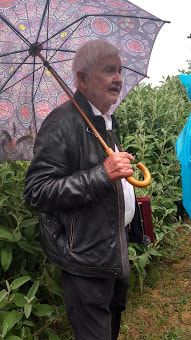
Pat Mills
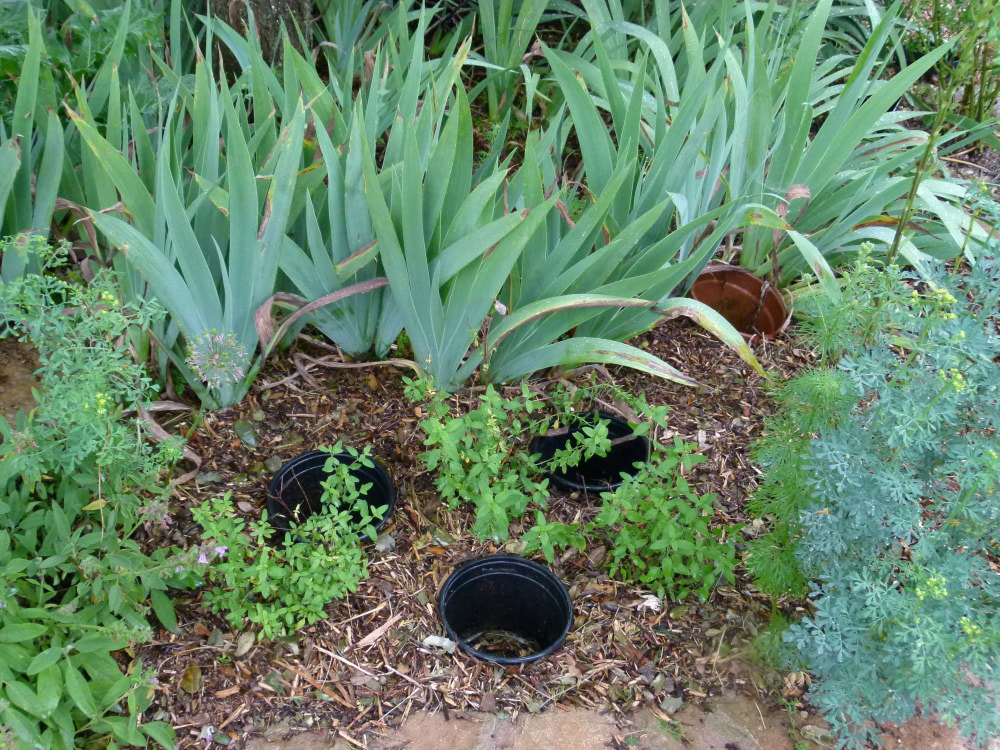
Empty pots for watering also contain the plant label
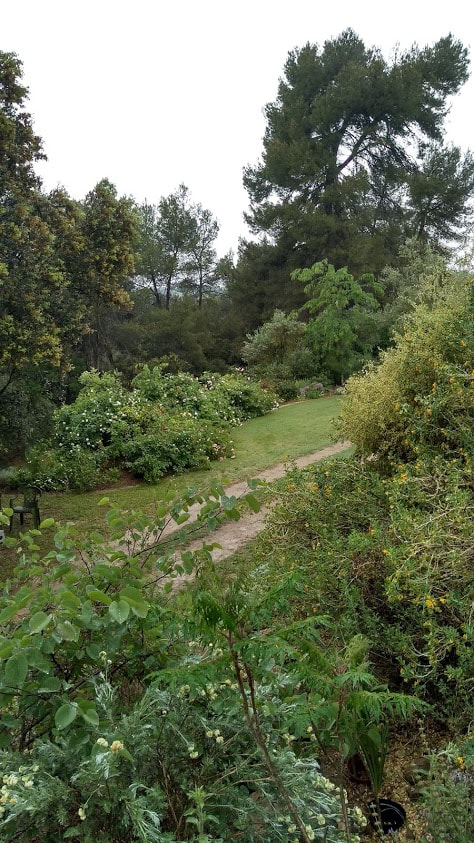
View from the house to the woodland
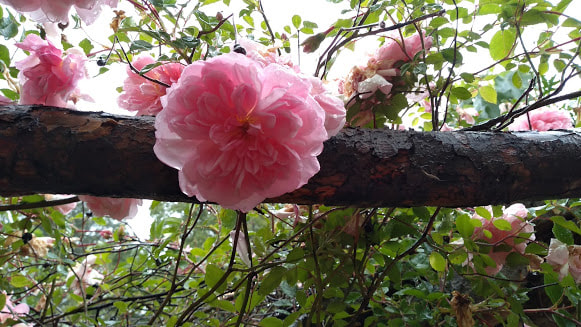
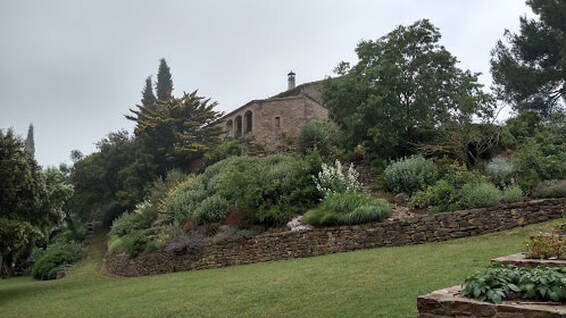
Pedrafita
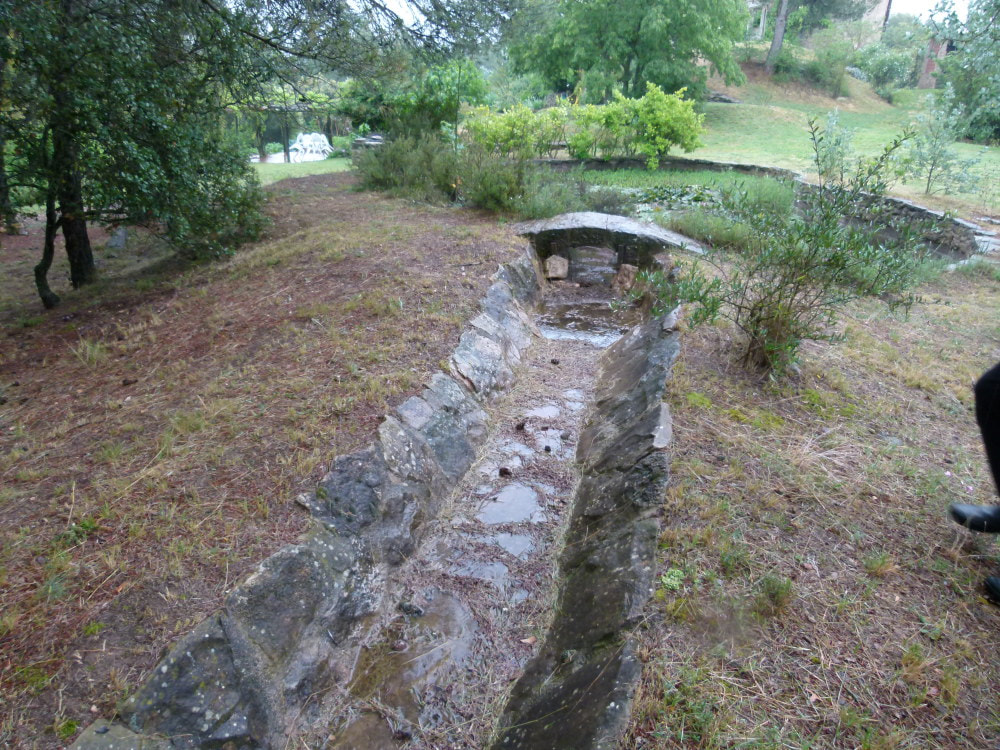
Rainwater falls on the hillside, flows along the channel and is collected and stored in tanks
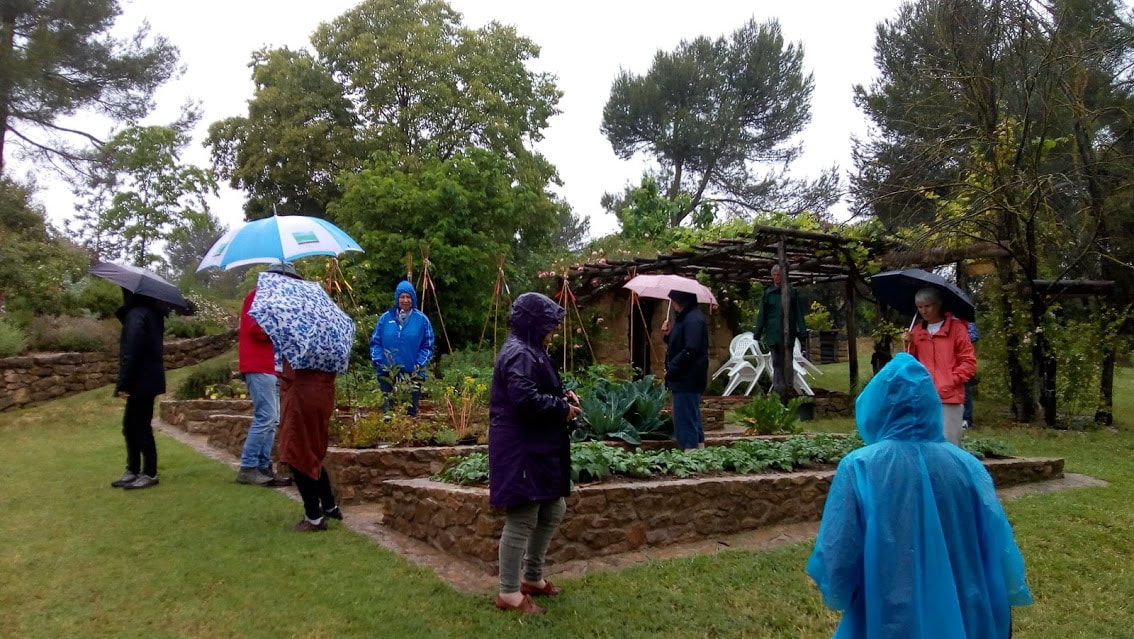
Our labels were hidden by waterproofs
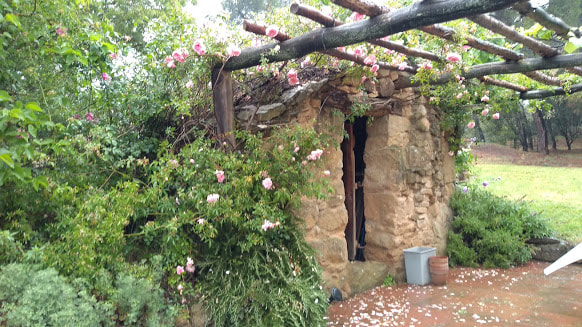
One of Pat’s roses growing over a pergola
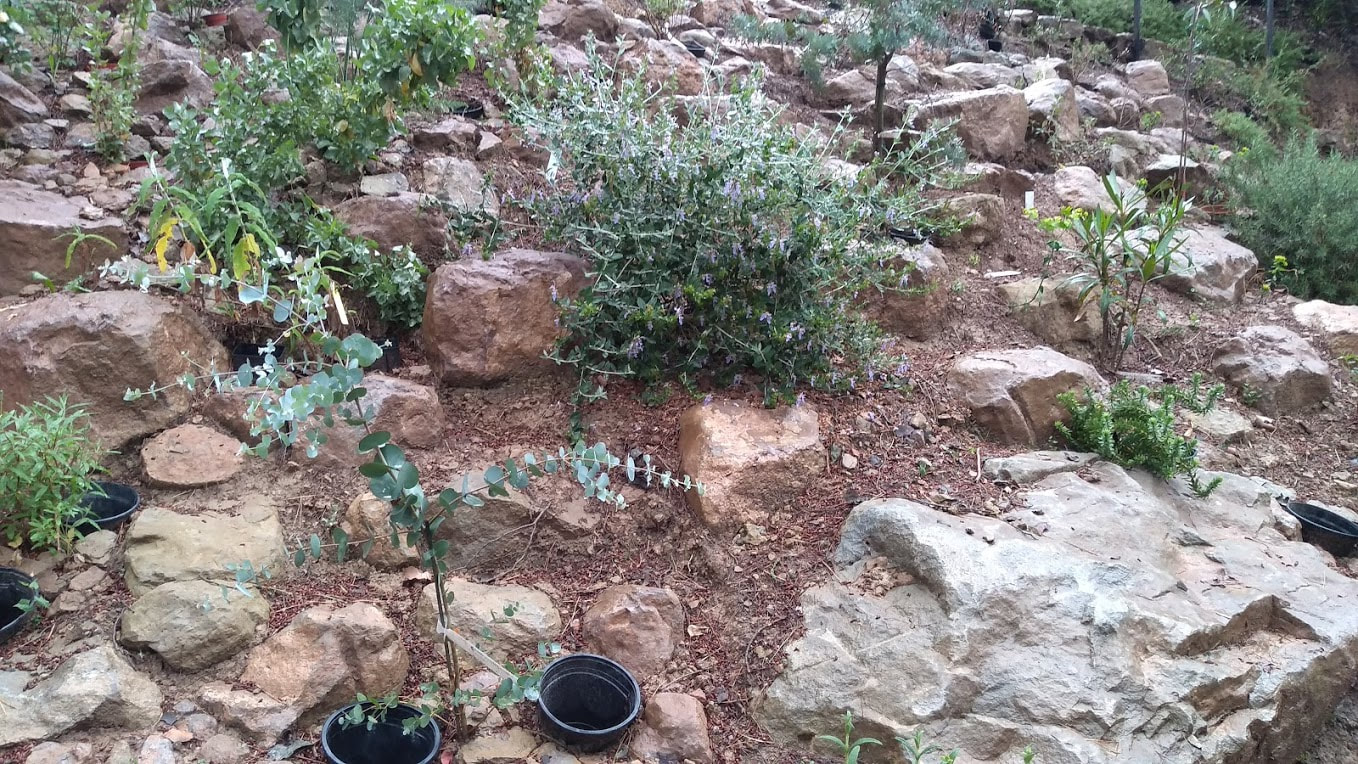
A newly planted area
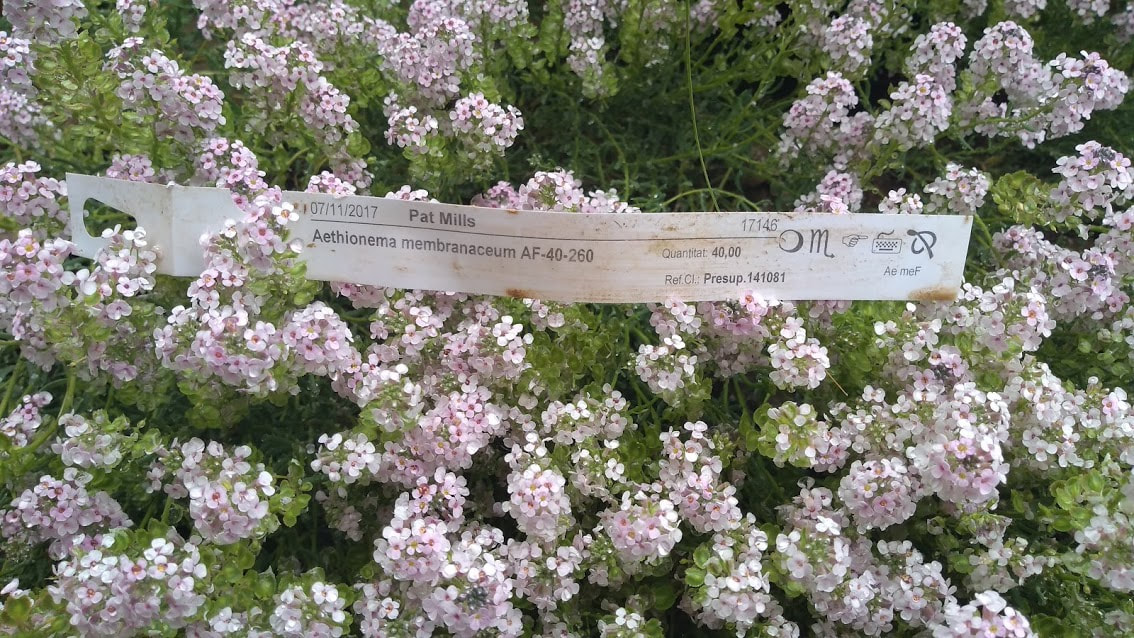
Aethionema membranaceum – one of Pat’s many recently acquired plants
Although Pat had specifically asked us to wear our name labels, they were hidden under our waterproofs until we went indoors for a very generous aperitif offered by Pat and Val before going to the nearby Hostal de Pinós for our final lunch. This is the oldest continuously operating restaurant in Catalonia and has never closed its doors since 1524. It is situated at the geographical centre of Catalonia and the current building was erected in 1677.
We thanked Pat and Val for allowing us to visit their home and garden and set off on our journey back to Cardona.
Before dinner, Brian Constable gave an illustrated talk on a holiday he had taken in Namibia and the Victoria Falls – a somewhat incongruous event taking place in a grand vaulted cellar of a castle in Spain.
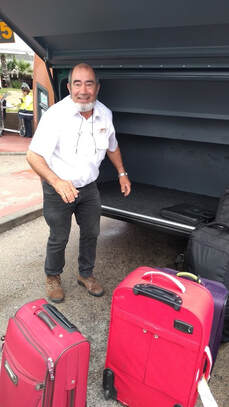
Bartolomé
Day 7 – Saturday 27 May
We were up early for a final breakfast and farewells to those who were making their own way. The rest of us boarded the coach for the 100 km run to Barcelona Airport where we thanked our driver Bartolomé and our organiser and guide, Brian.
This trip was billed as ‘Variety in Catalonia’ and it certainly lived up to the description. There was coast and country, gardens and wildflowers, mountains and forests. The food was good, the wine was good and the weather was good until the last day. We enjoyed our trip and our grateful thanks go to Brian, who put in an amazing amount of work to ensure that everything ran smoothly.
Cathy Rollinson

Brian Constable
Photos: Anne Keenan, Helena Kent, Graham and Cathy Rollinson

